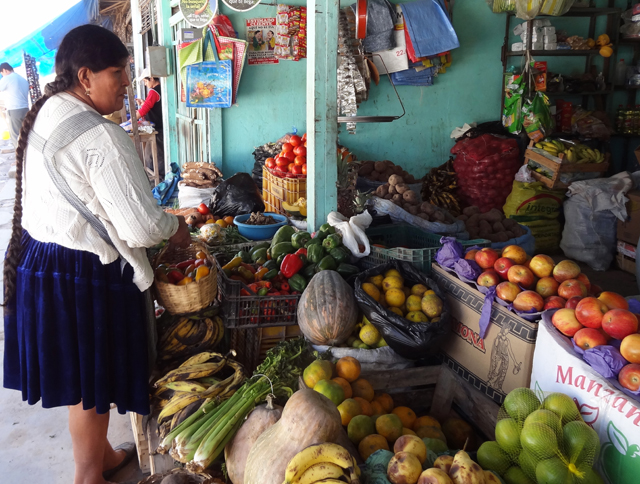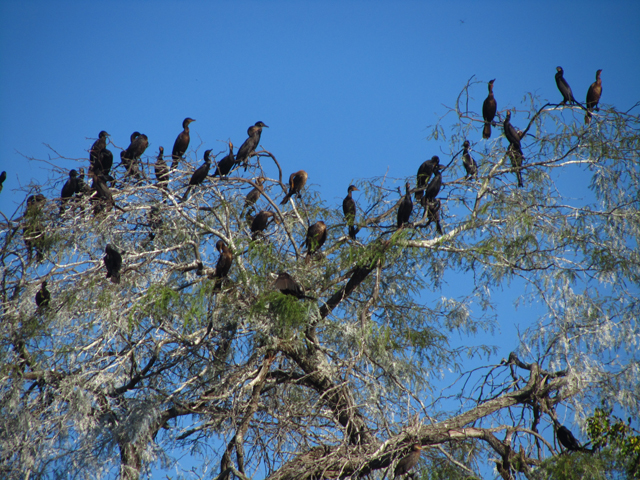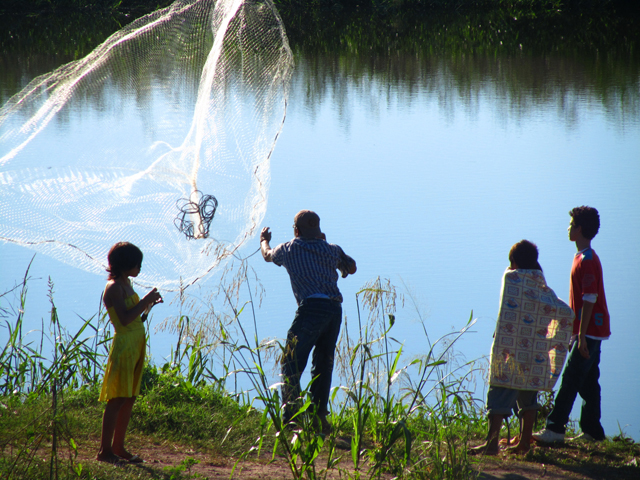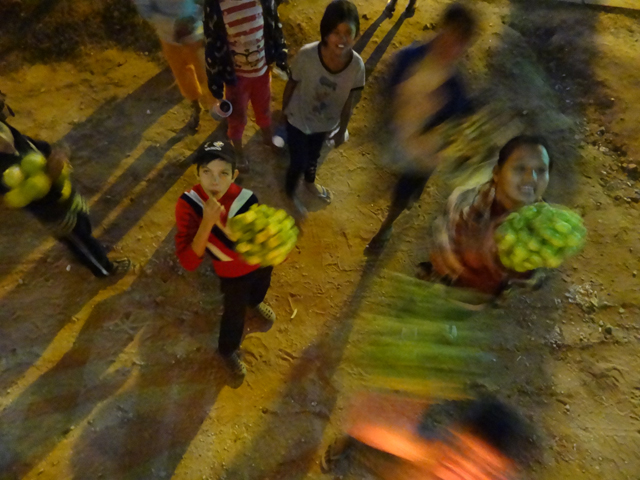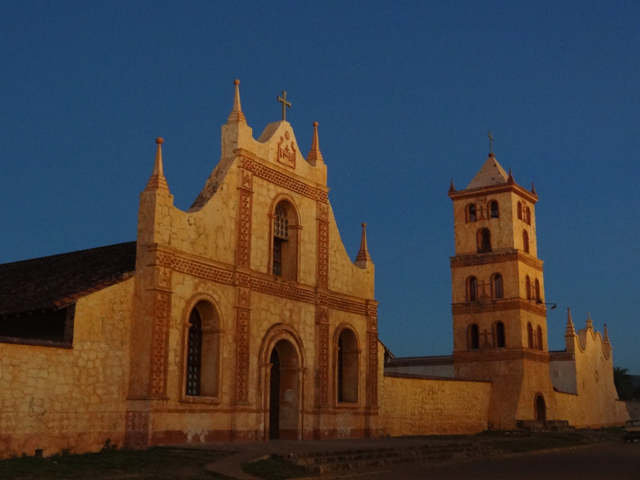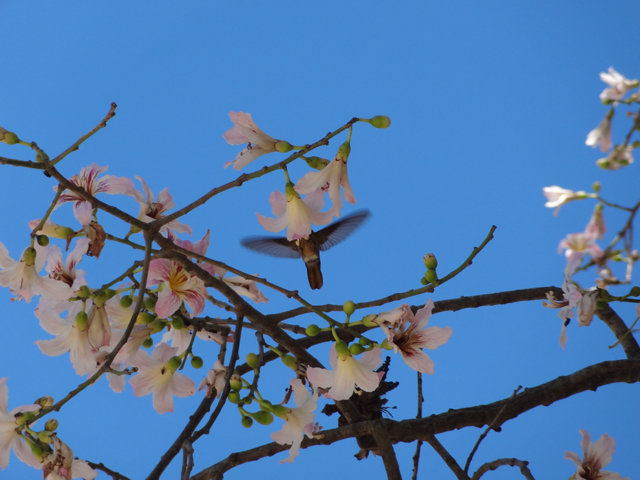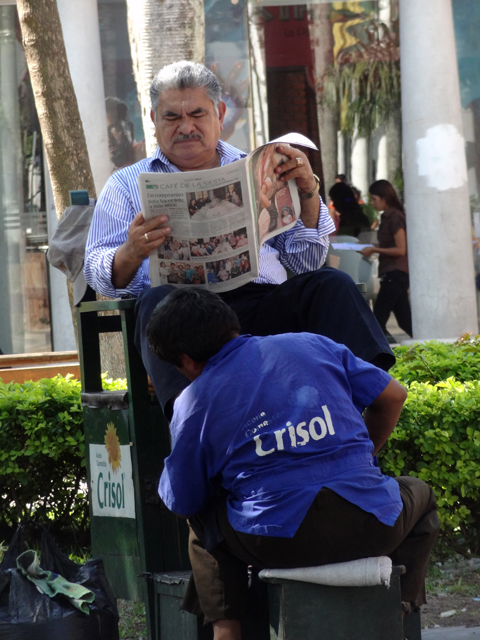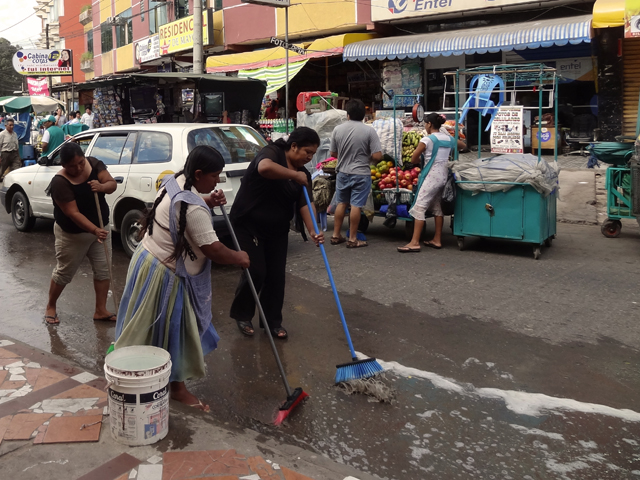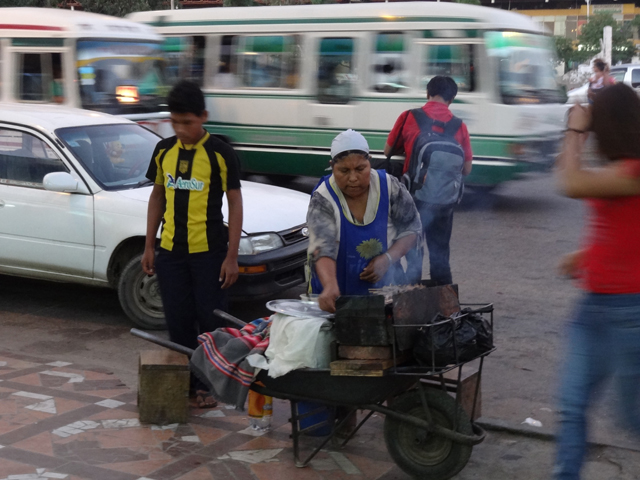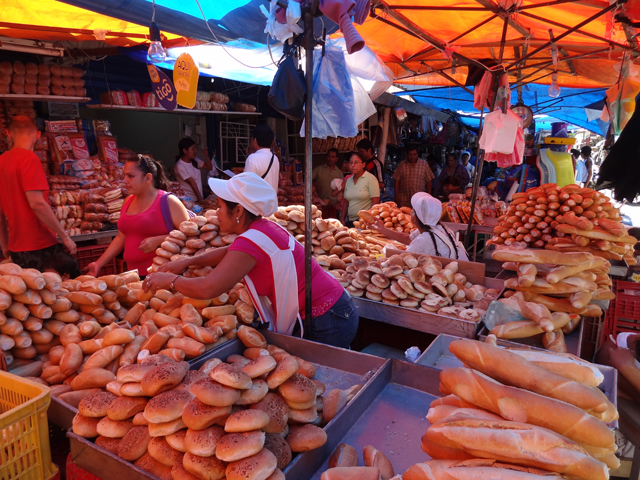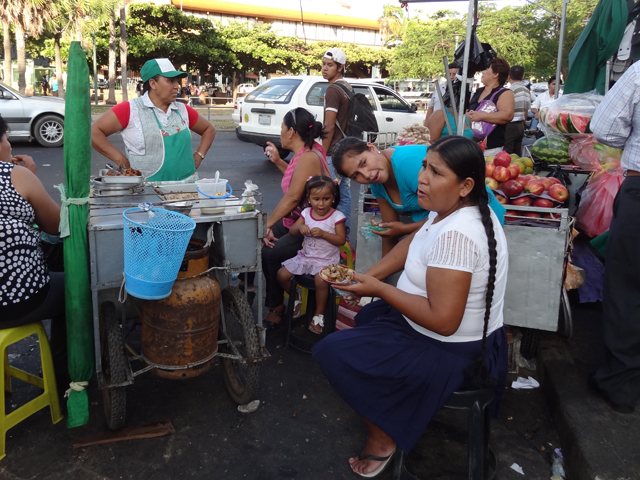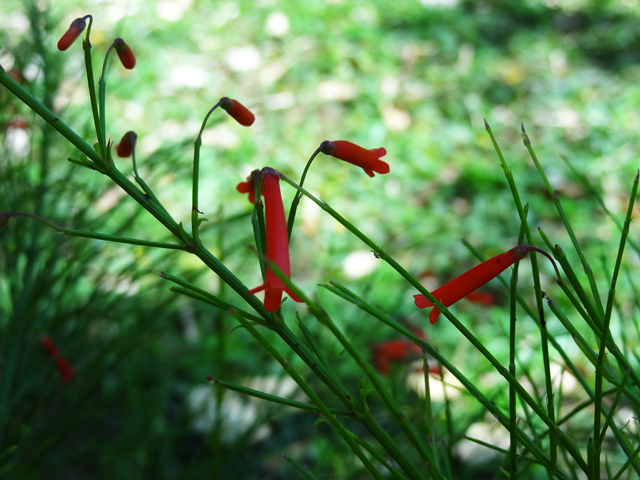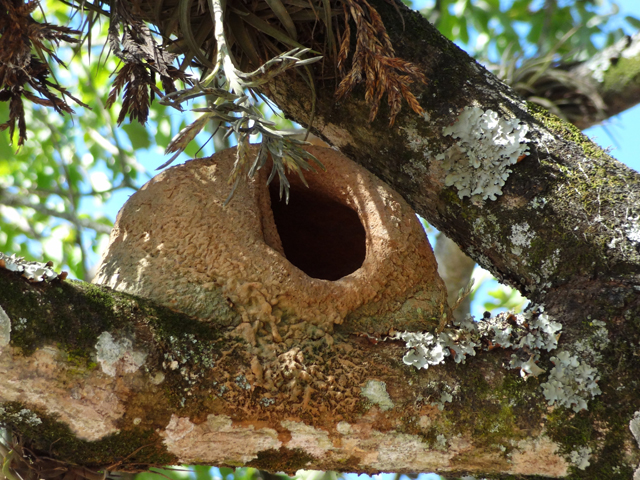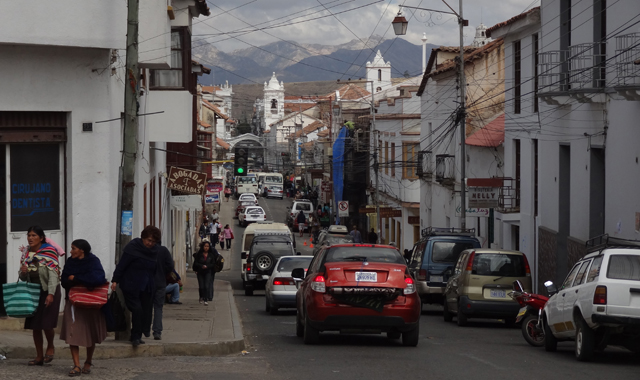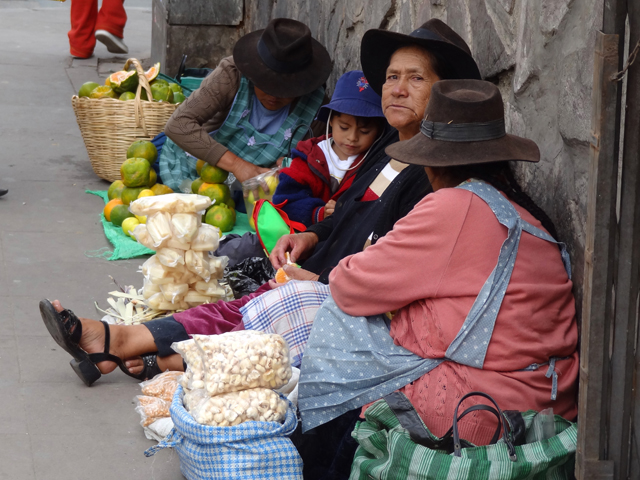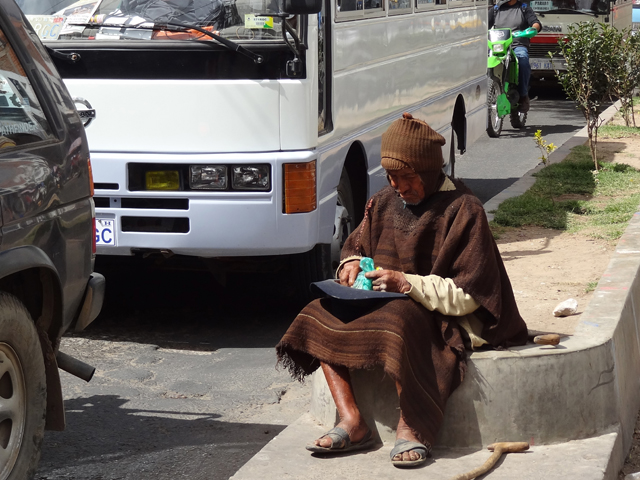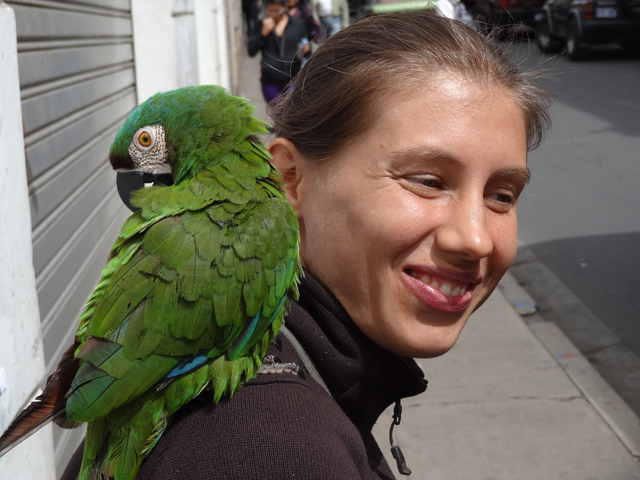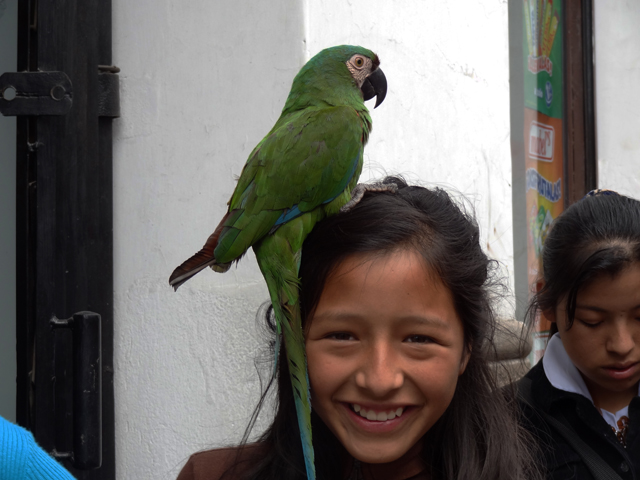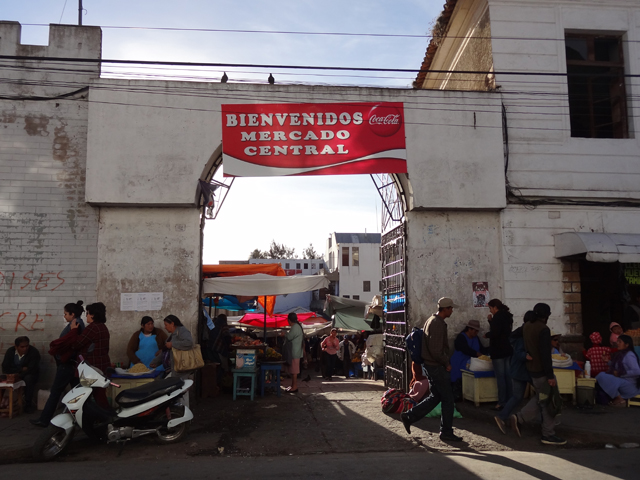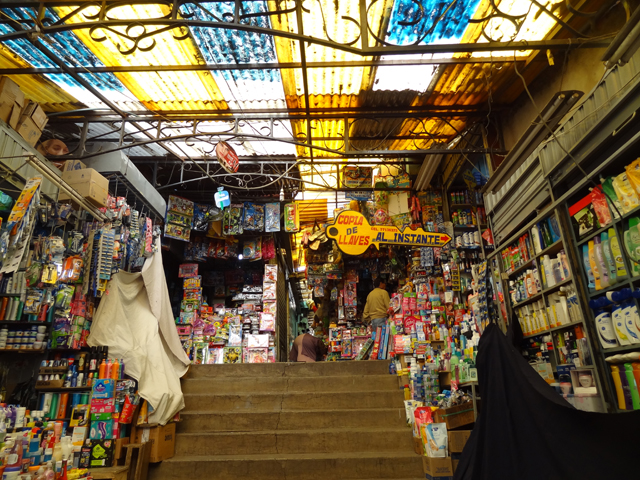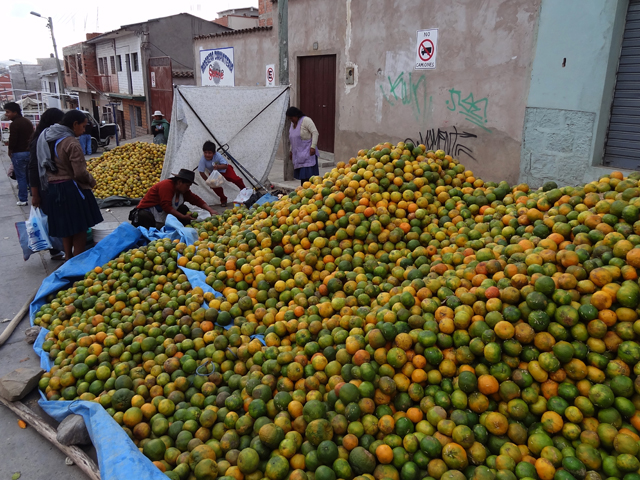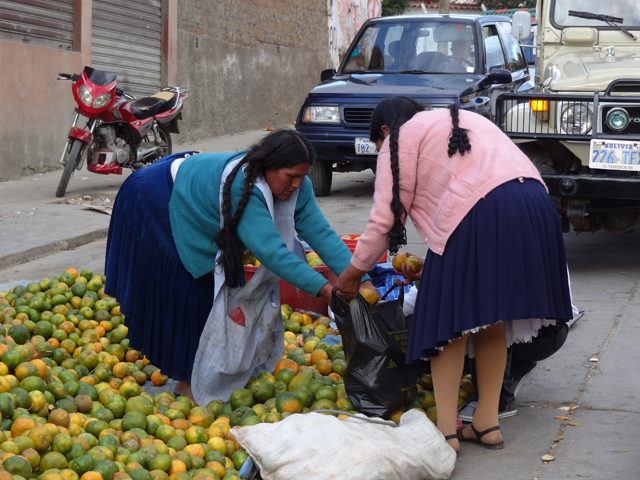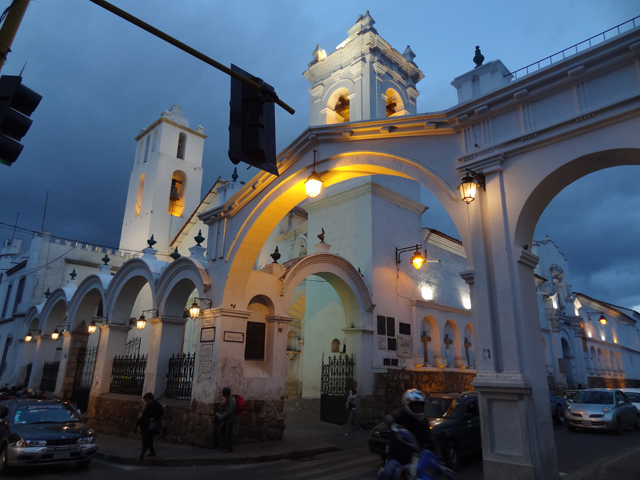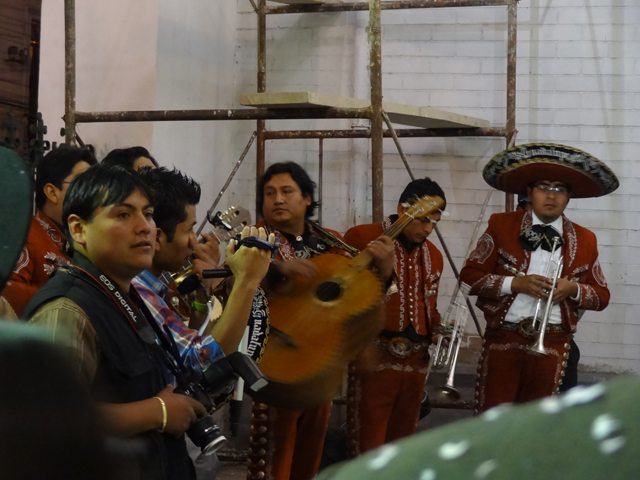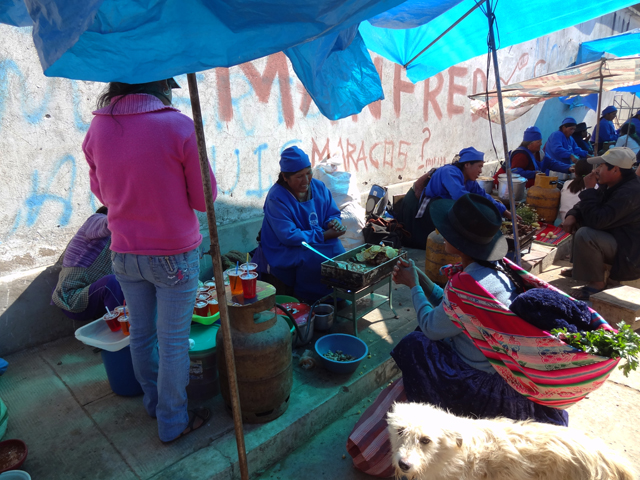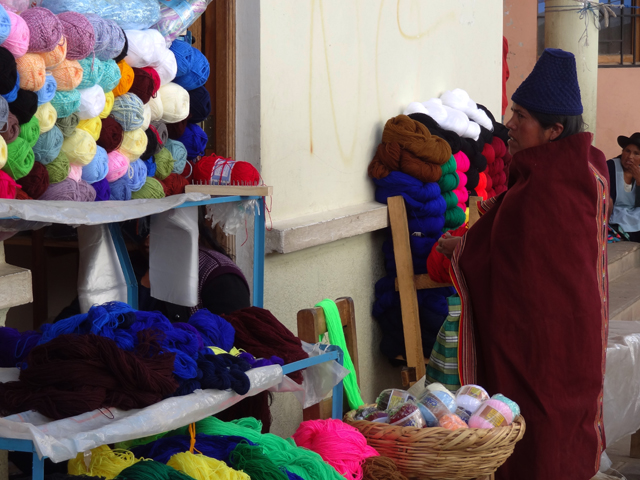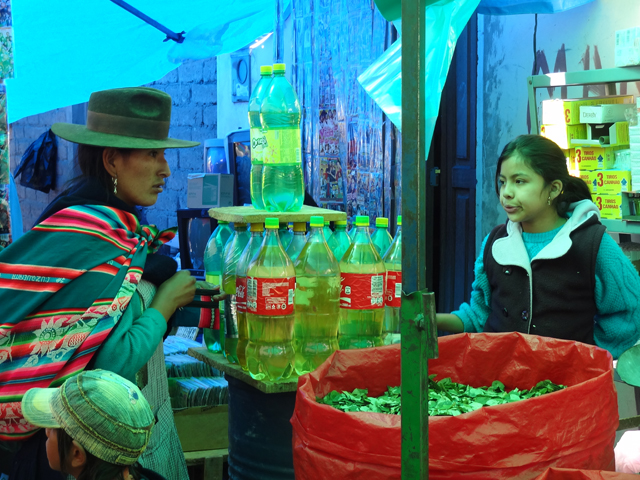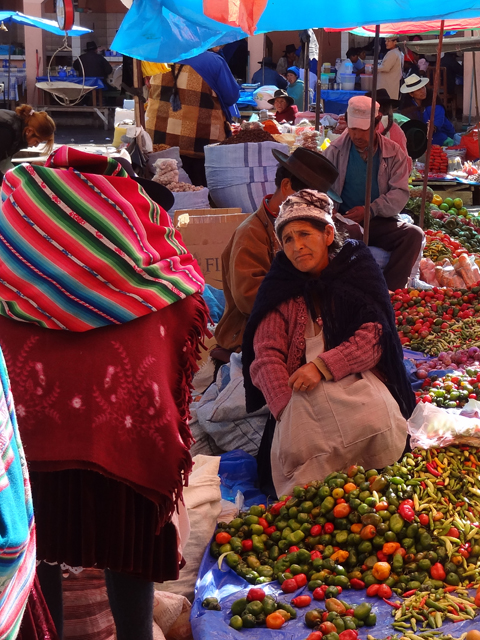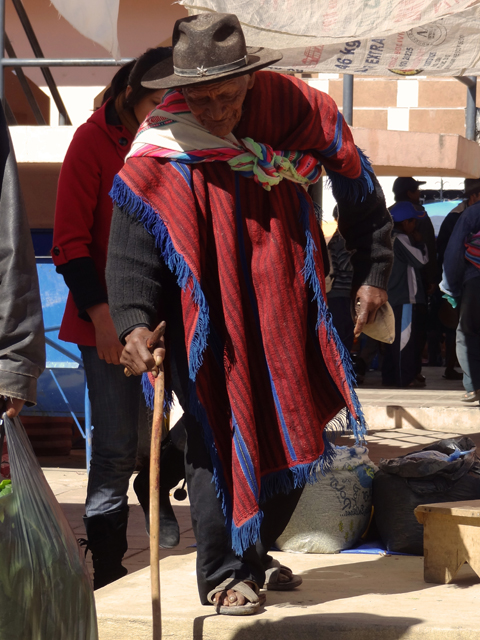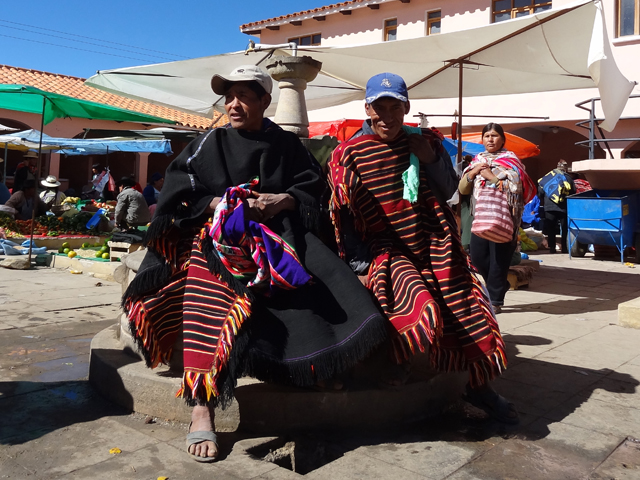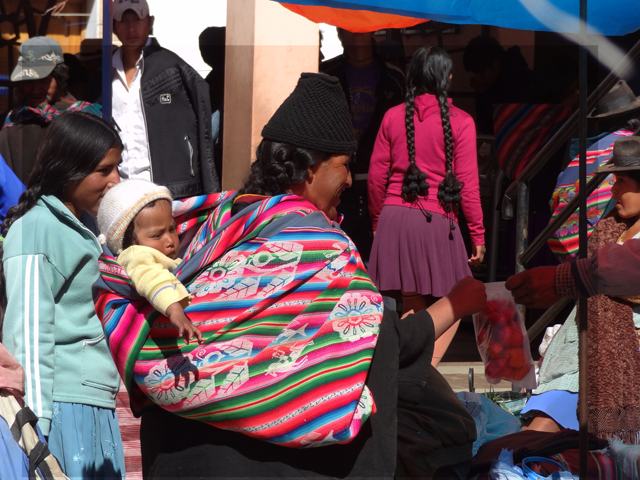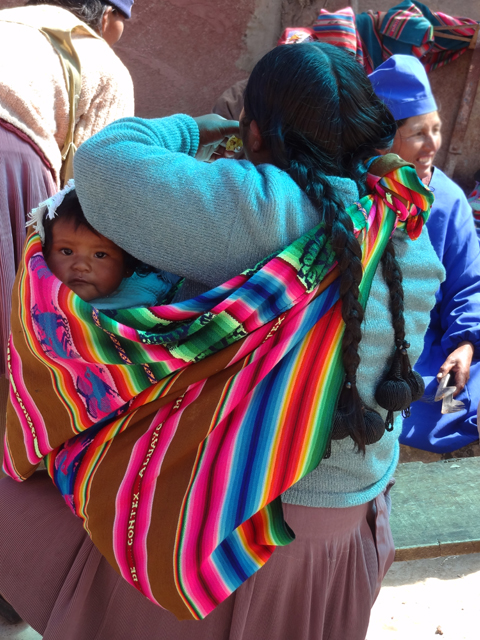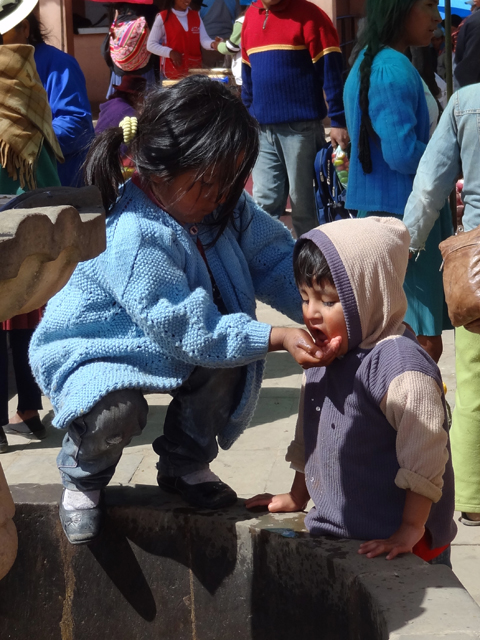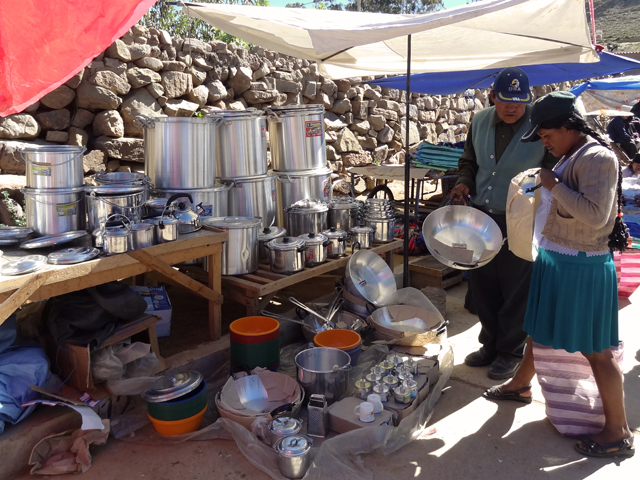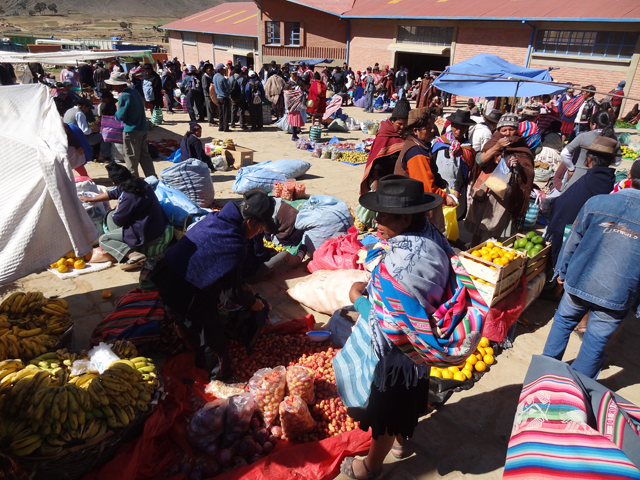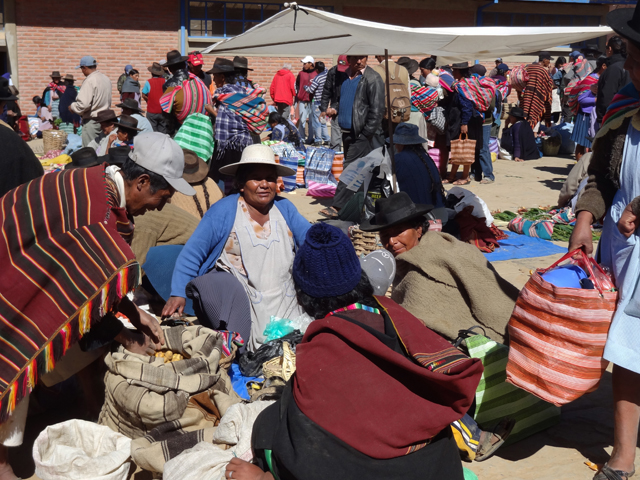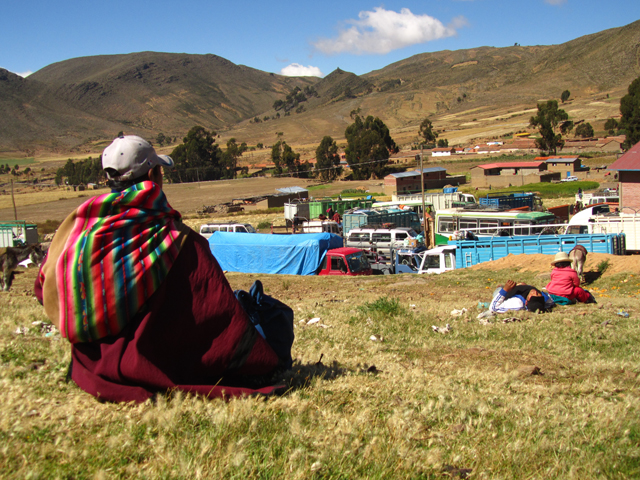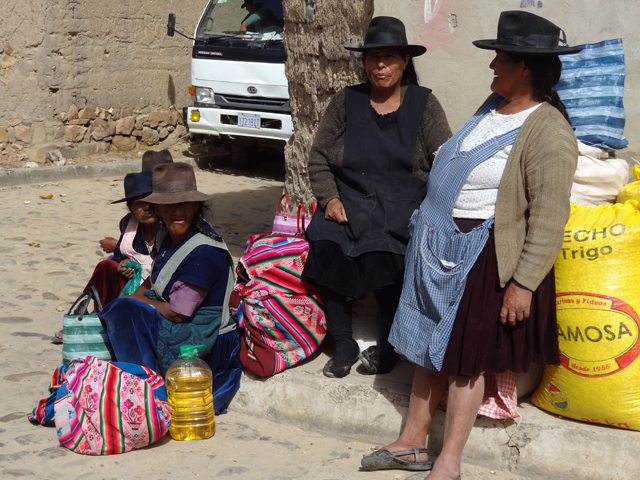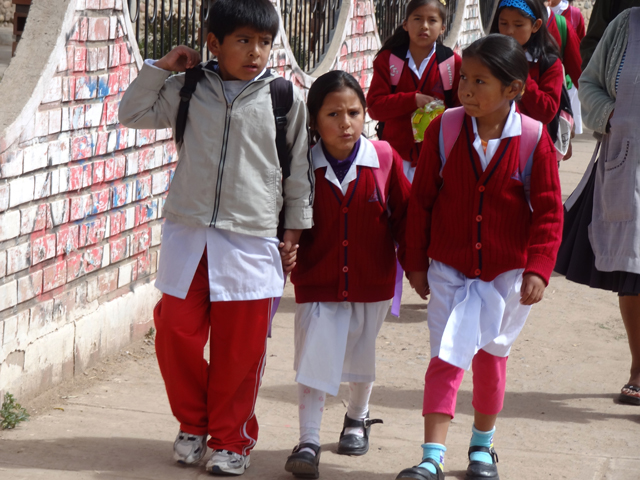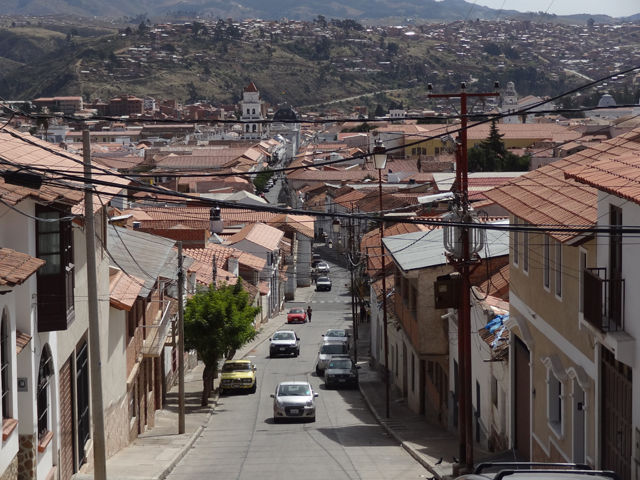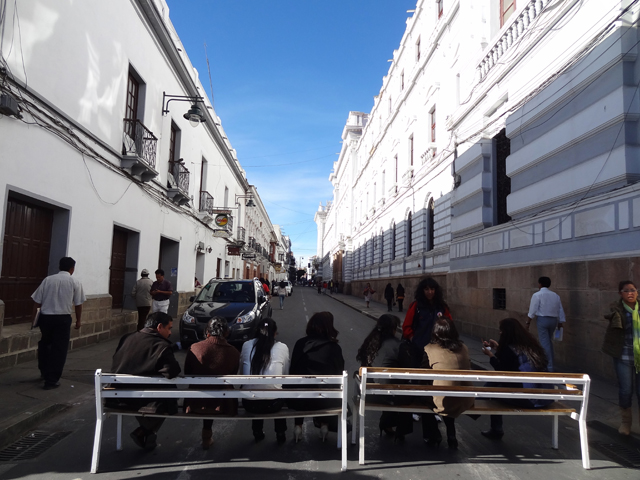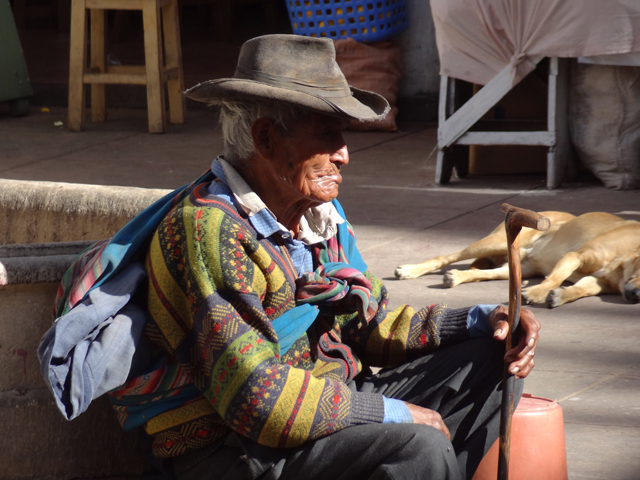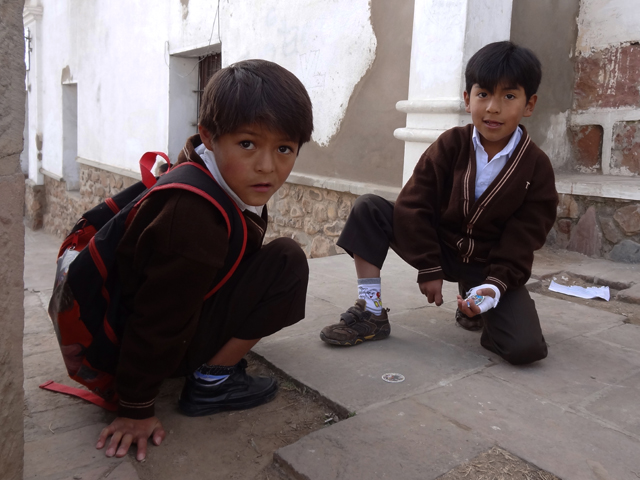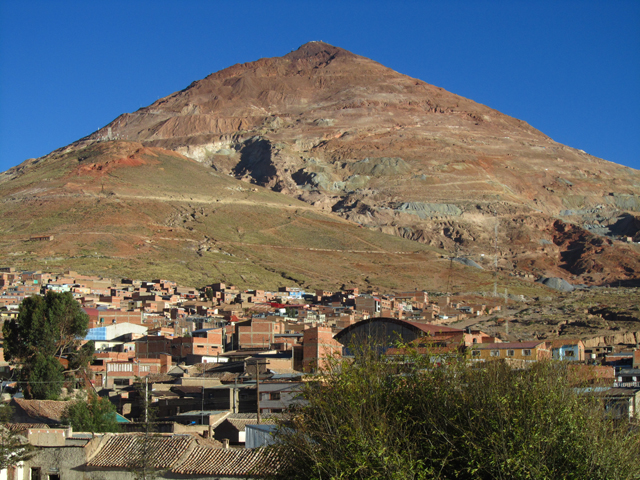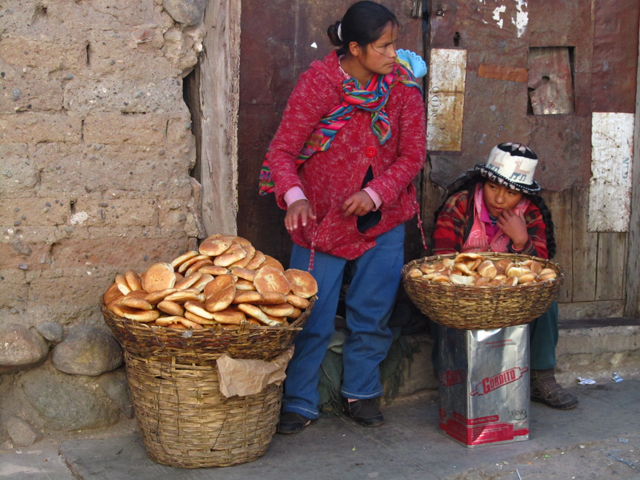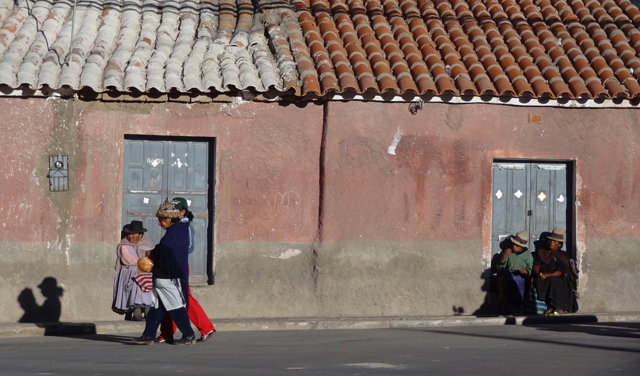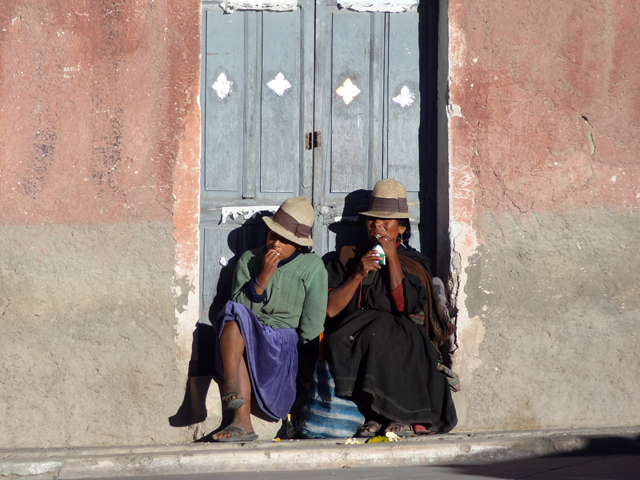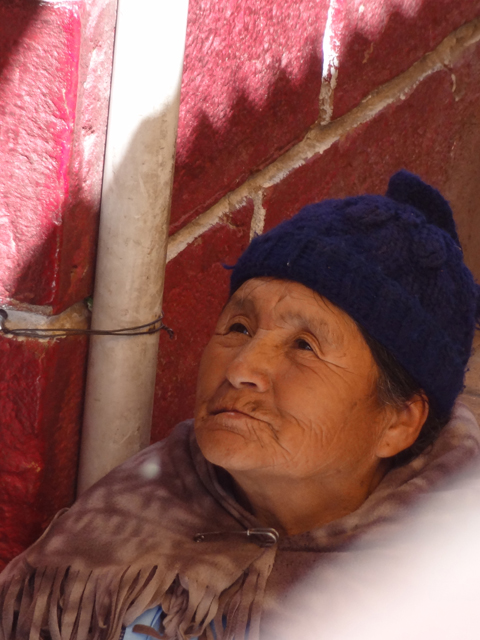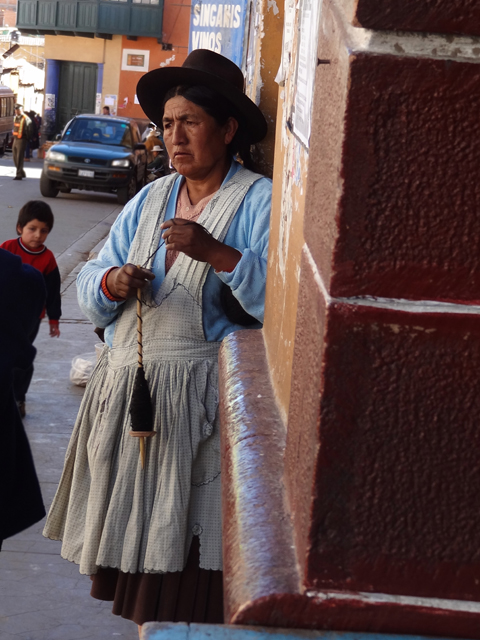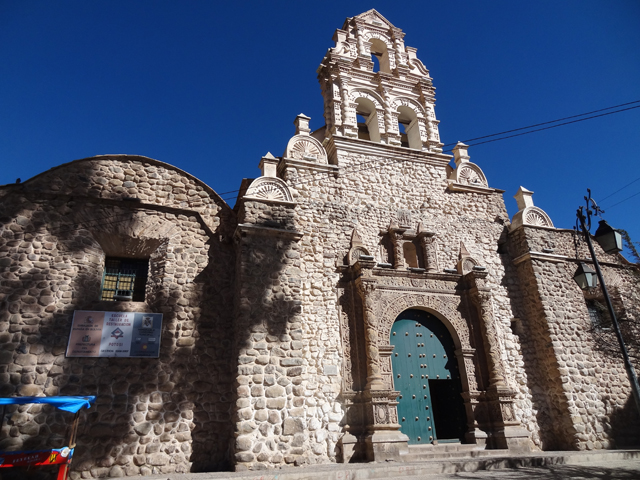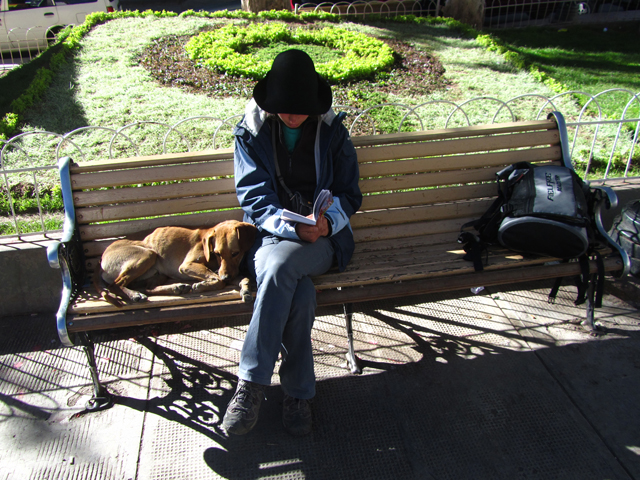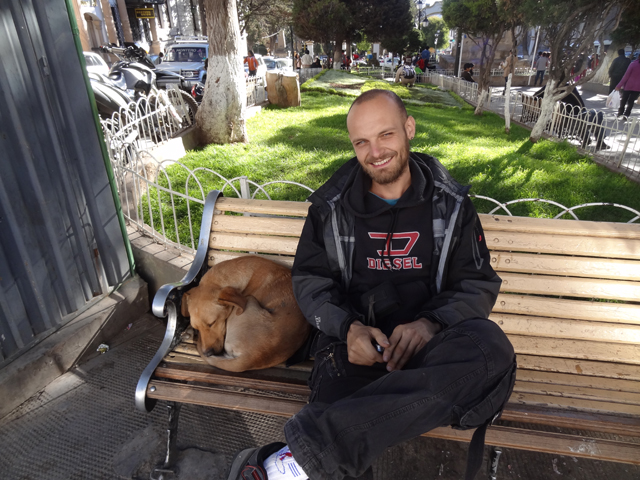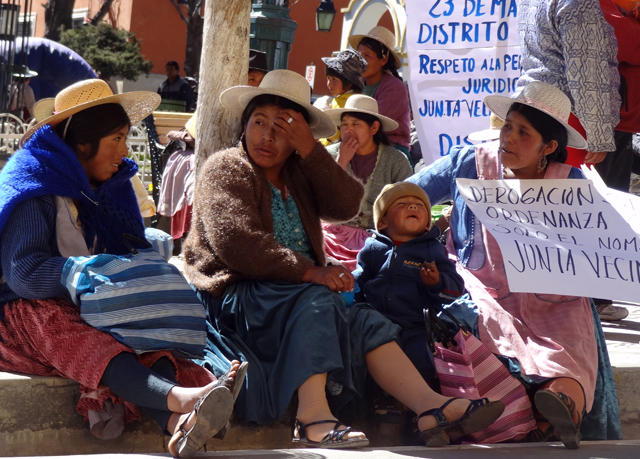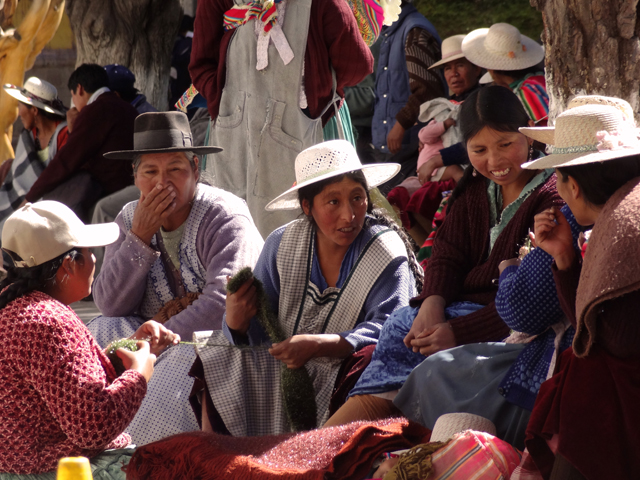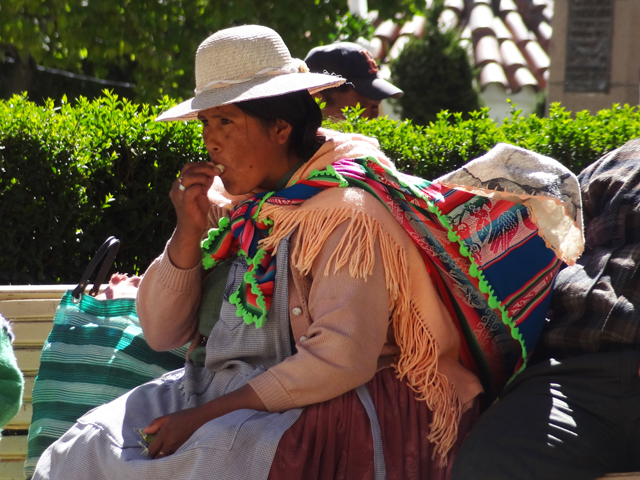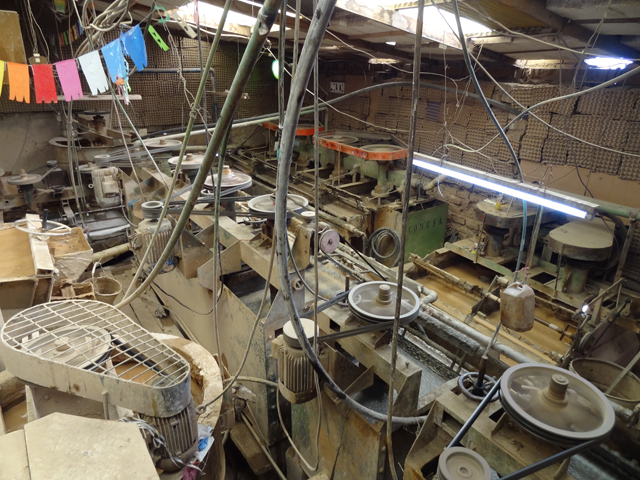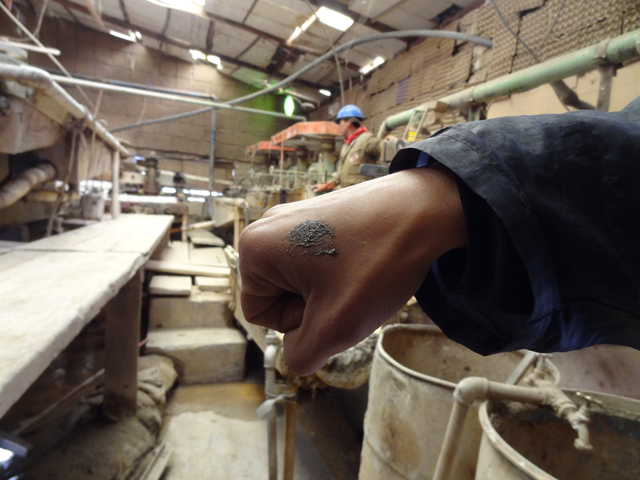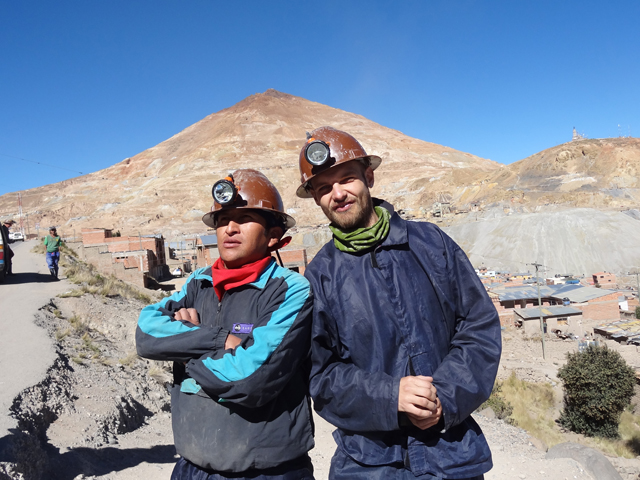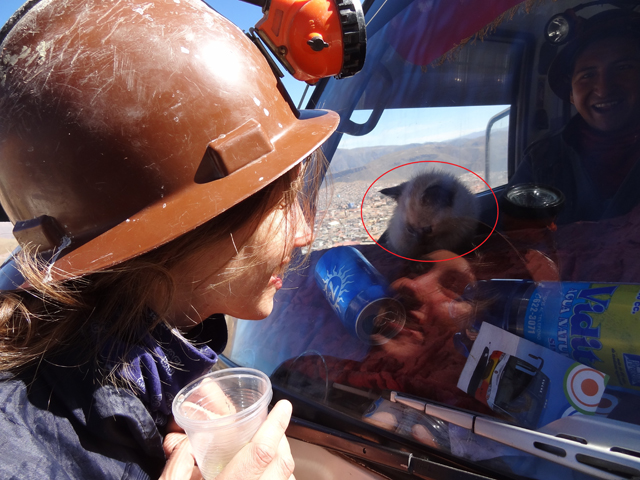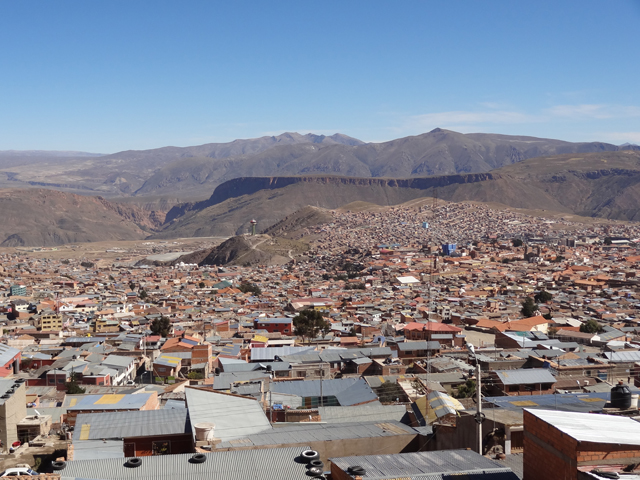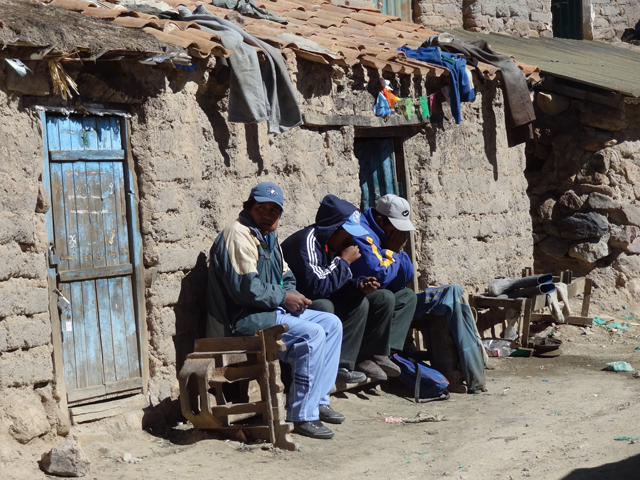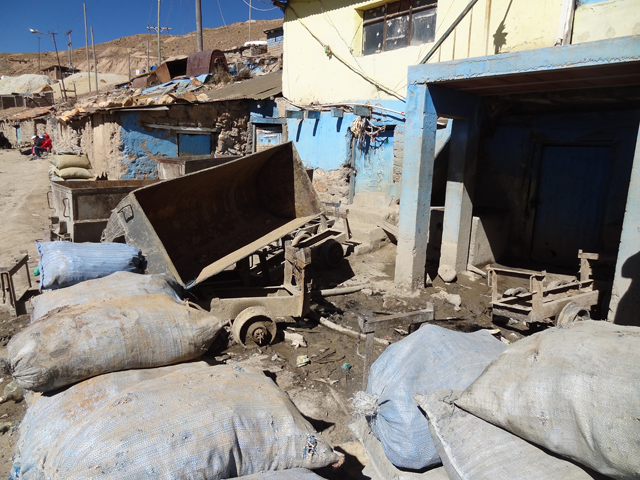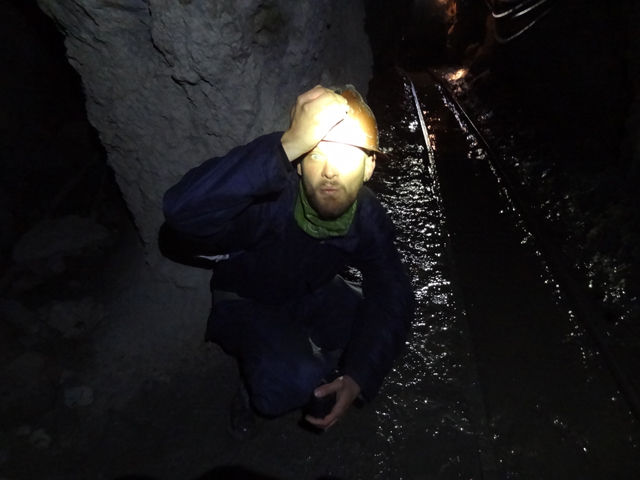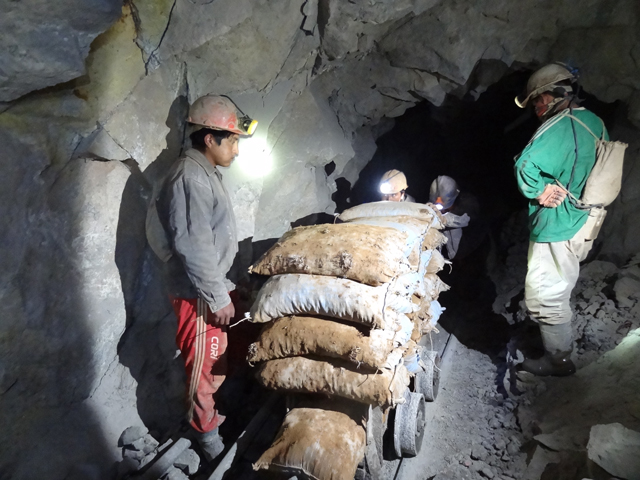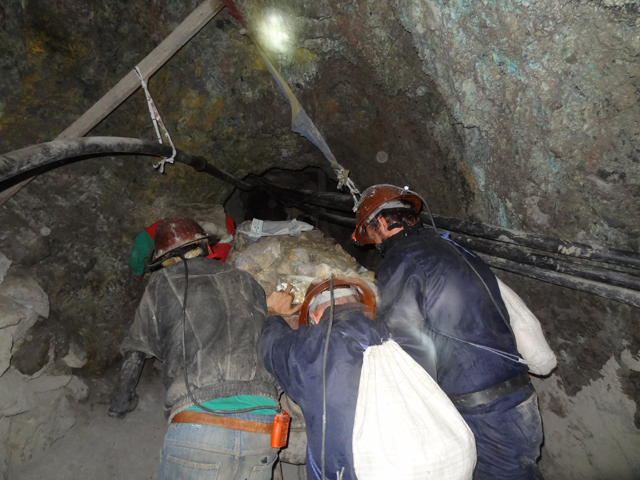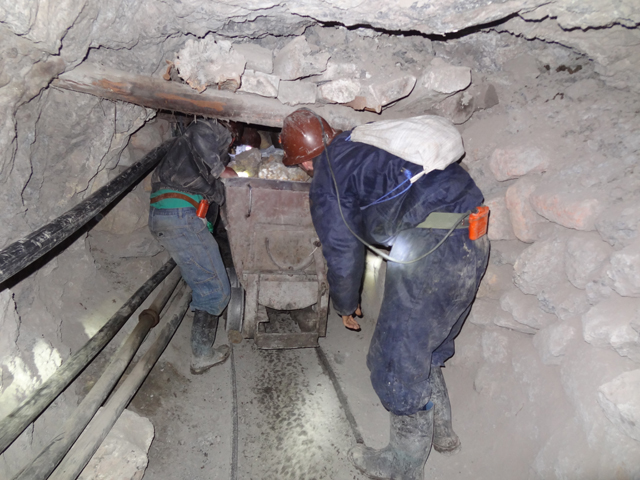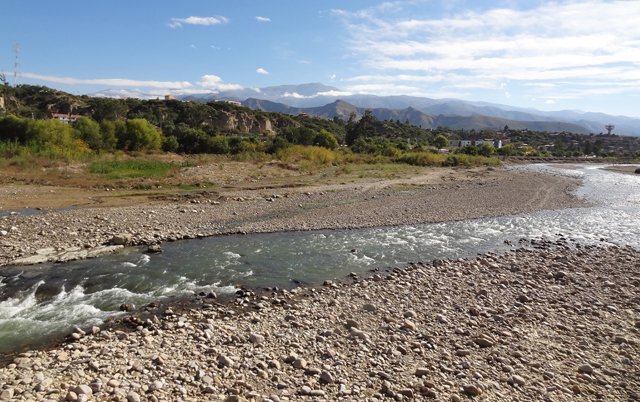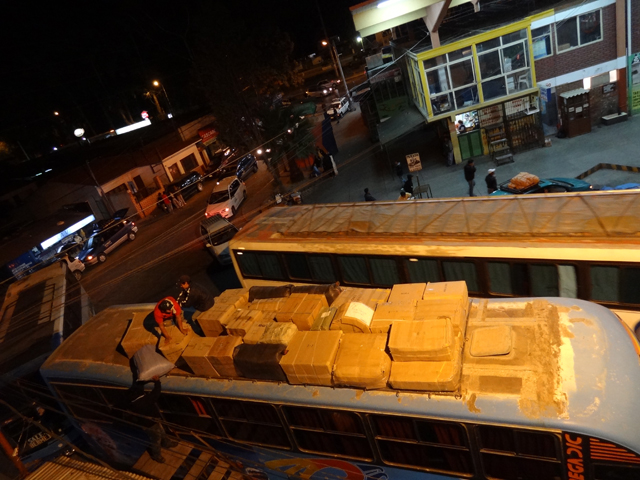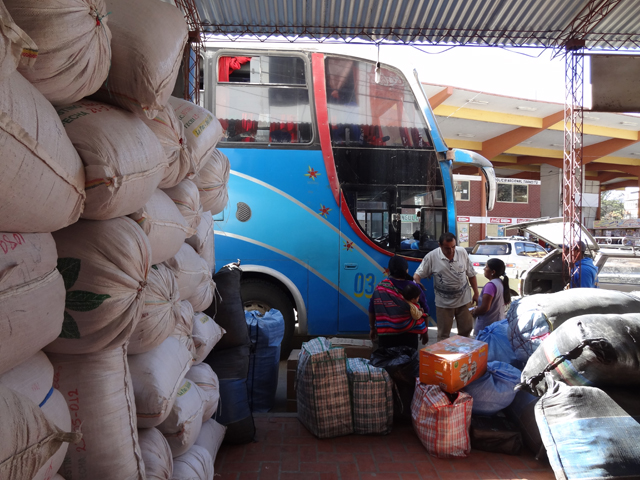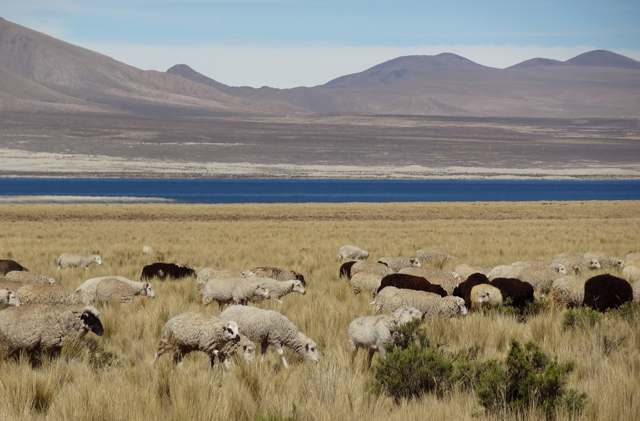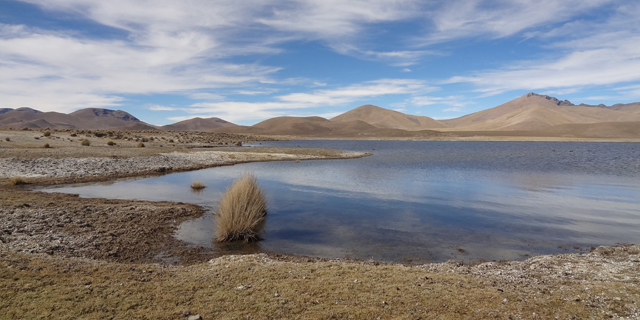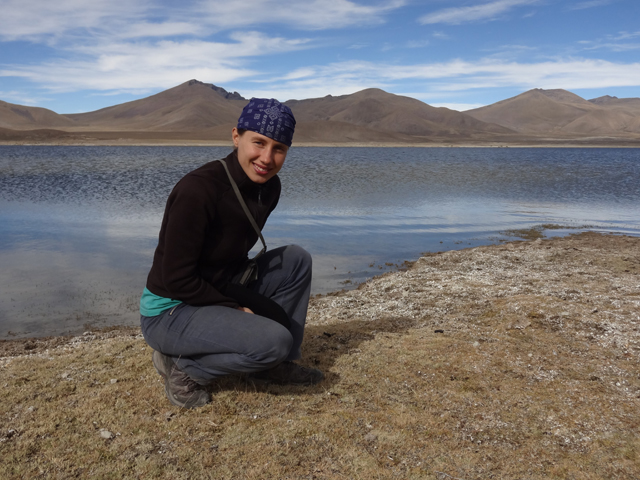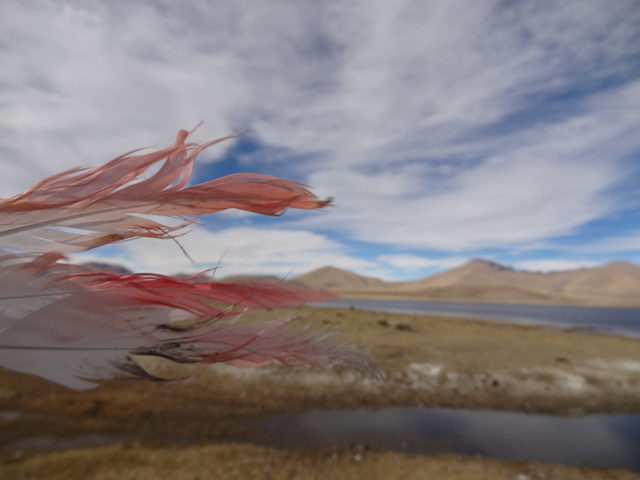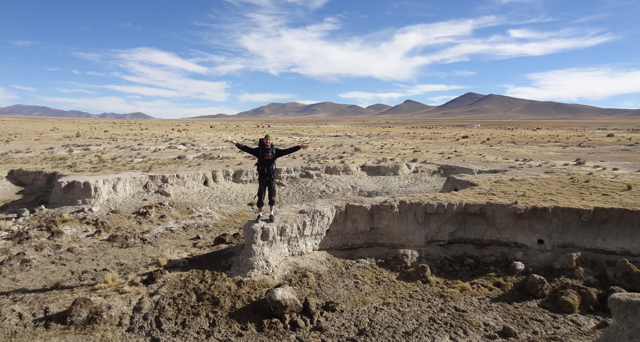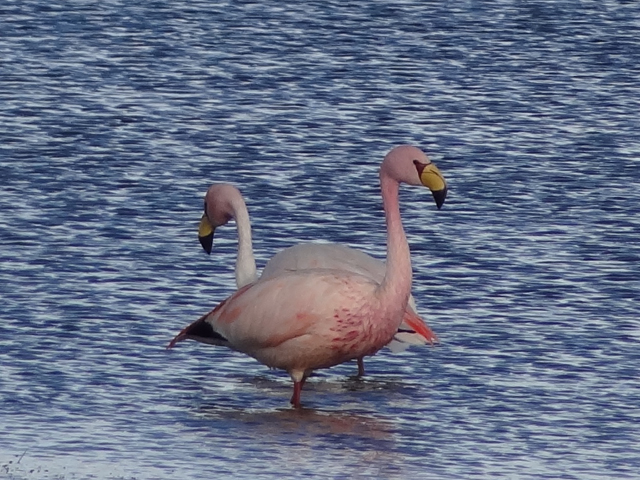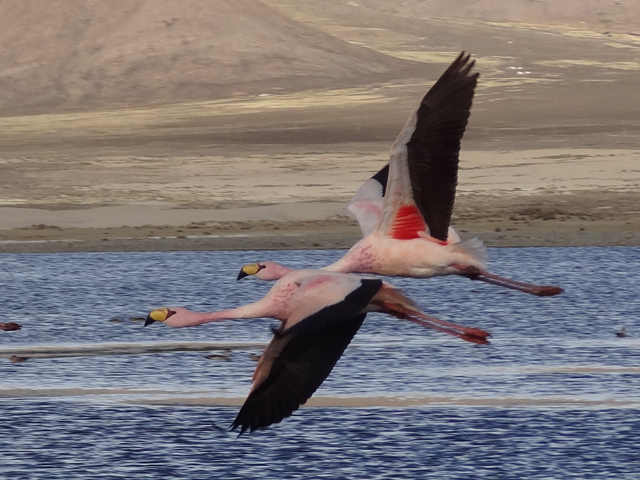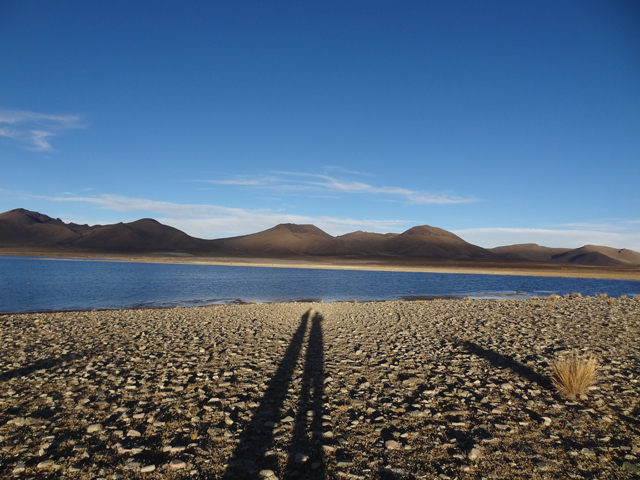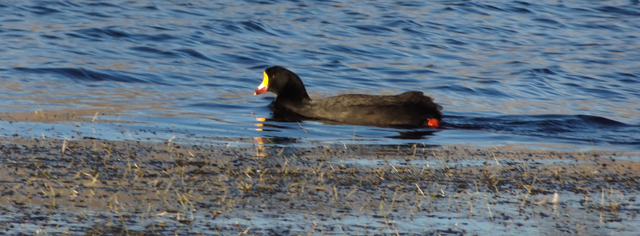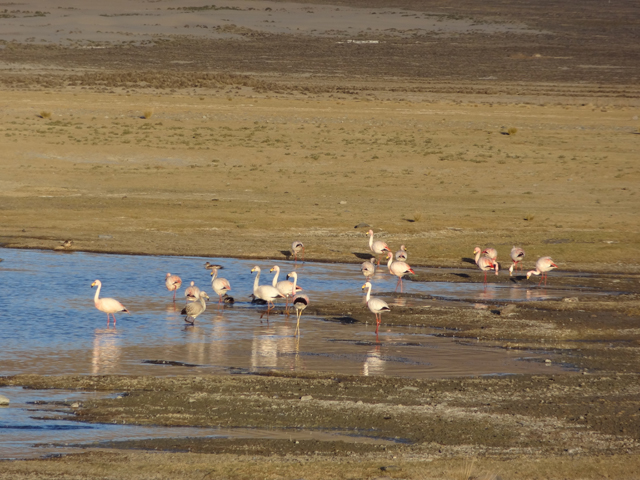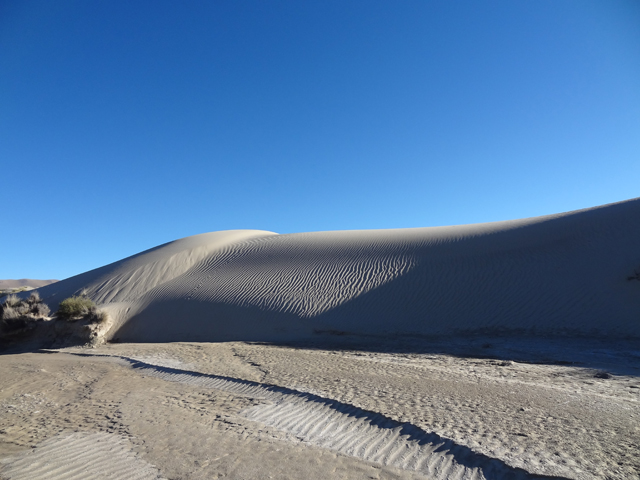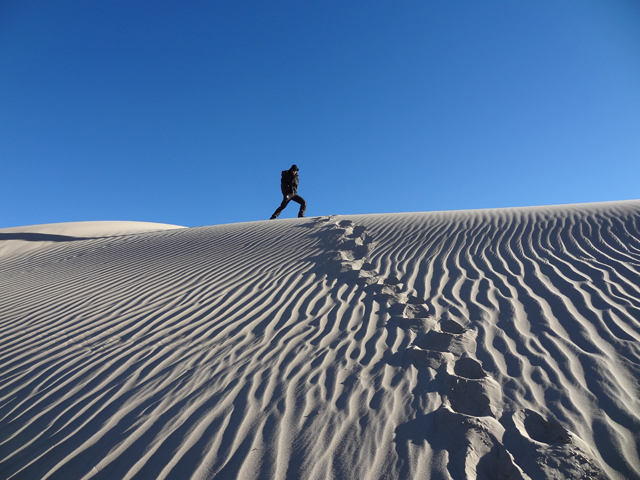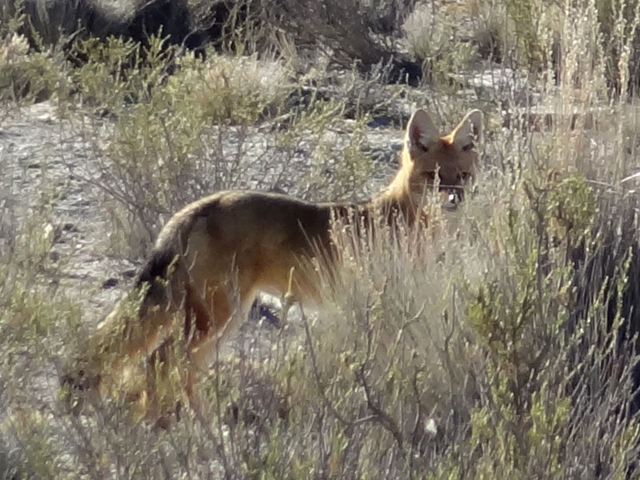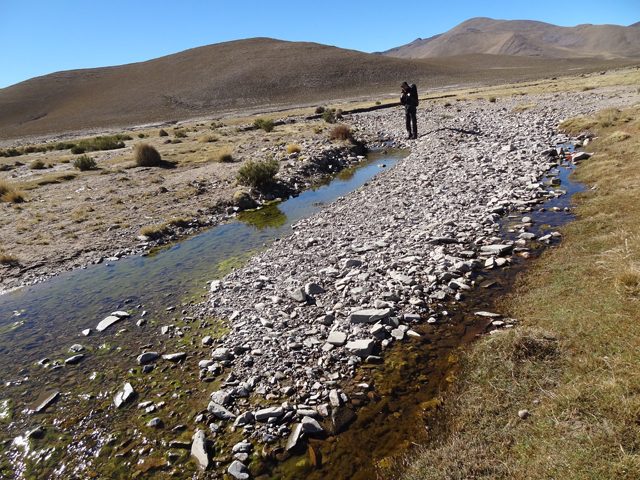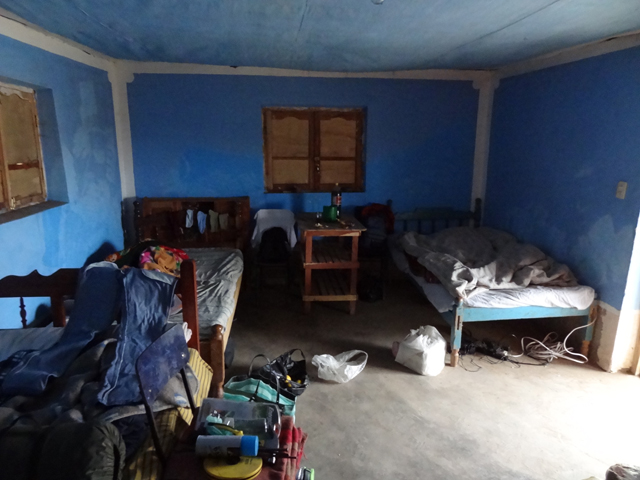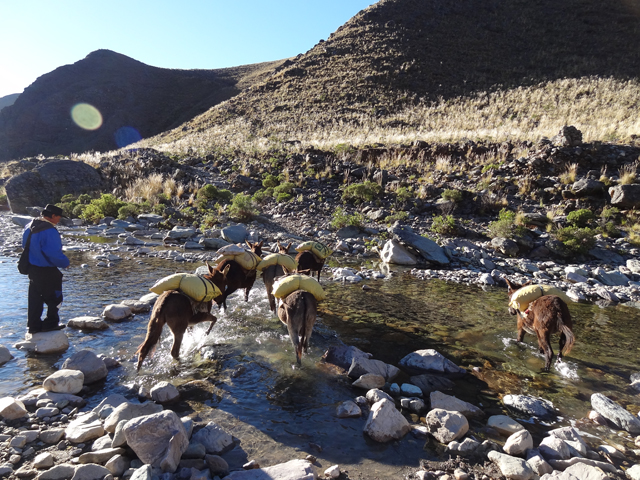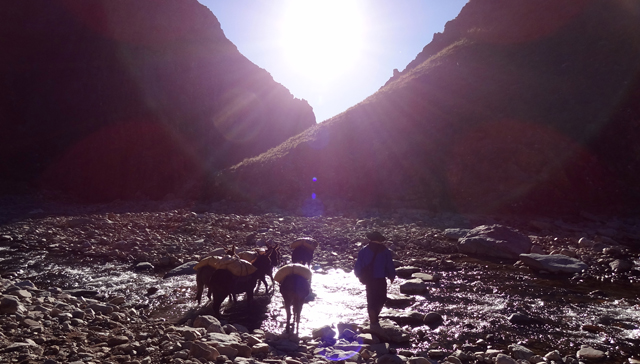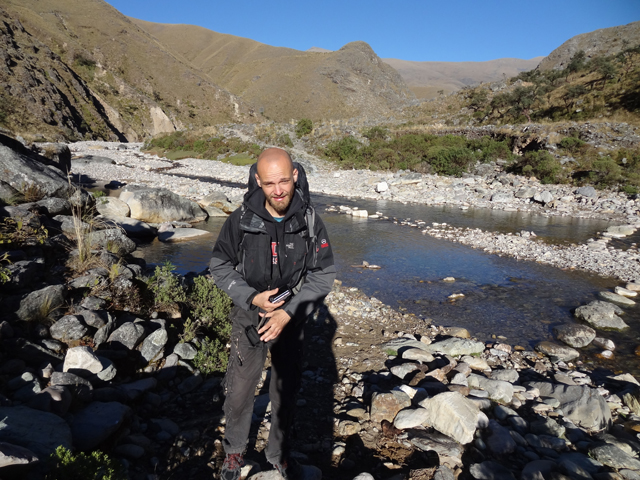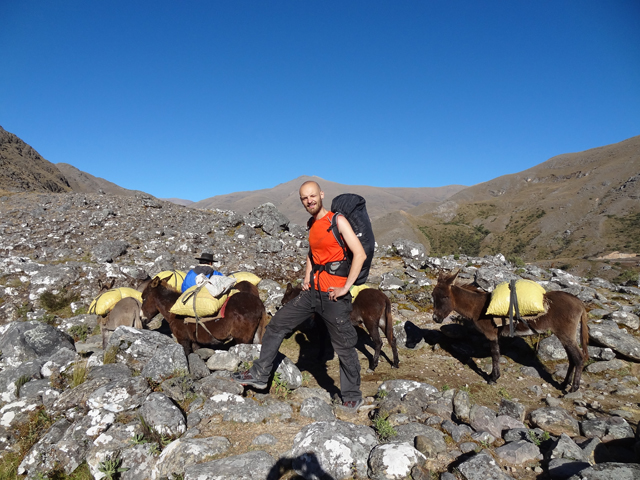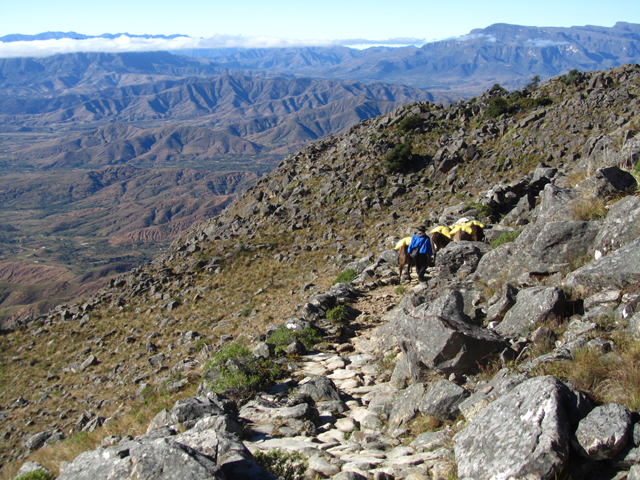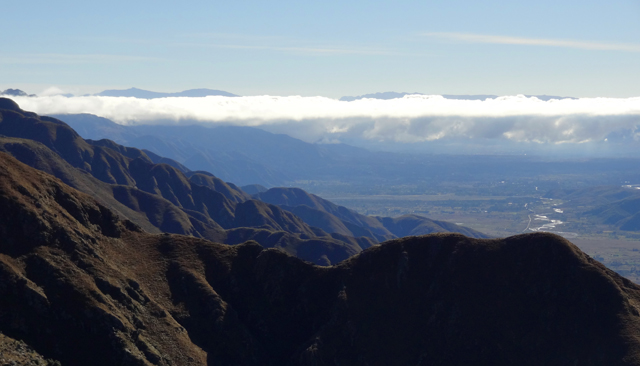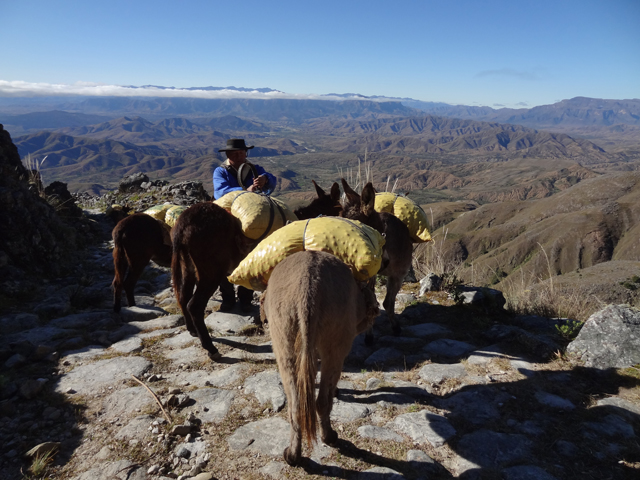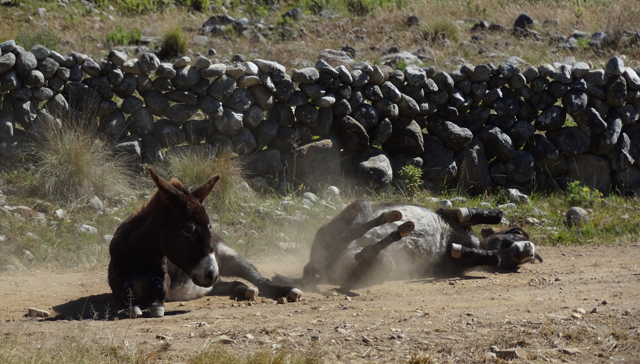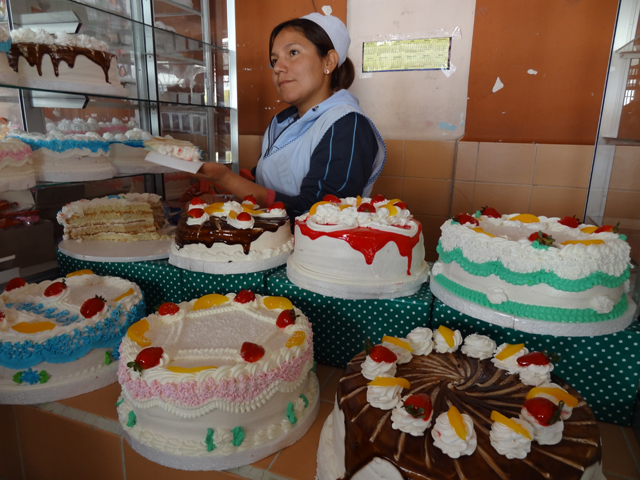Bolivia - amazing landscapes and proud mountain folk, part I (Arroyo Concepcion, Perto Suarez, San Jose, Santa Cruz, Sucre, Potosi and Tarija)
Unusual immigration experience at Arroyo Concepcion:
Here is a brief summary of our 2-months stay in Bolivia. First, it was the only country so far where we stayed illegally, albeit for a really short while (just one day) and not exactly voluntary. As we arrived at the border between Brazil and Bolivia and got our exit stamps, we saw a lot of locals just walking past the "Bienvenido a Bolivia" symbolic gate (no guards, no checkpoints - nada de nada). When we did find a couple of lonely guards, they told us to come back "mañana" :-). It turned out to be a major festival, so everybody including the immigration officers were enjoying a day off (we should have known better than to expect them to work on May the 1st - the Soviet Labour Day).
We did get our entry stamps the next day, but had to spend our very first day in Bolivia as 'illegal aliens', which we did quite happily, absorbing all the novel things that always strike us most on the very first day in any country. For Bolivia these first impressions were: how much it looked like the stereotypical image of a "wild west" kind of place (deserted, sparsely populated, with only basic human comforts etc.), how much cheaper than Brazil it was (hence a really busy market for such a tiny border place as Arroyo Concepcion which had dozens of shopping Brazilian neighbours), how much the cuisine revolved around chicken (which meant that every meal would be a battle for a vegetarian person like me) and how distinct a psyche and a look the people had. As to the former, they struck us as reserved, proud, not very smiling, yet very civil and helpful people when addressed directly. And looks-wise, it was really fascinating to see all the women wearing traditional outfits, which consisted of a typical frilled blouse and a short velvet skirt or a long pleated one with layers of petticoats (the pollera), a huge apron (as if they just walked out of the kitchen), a small bowling hat that fits exactly at the tip of their heads and an unfailing colourful bundle on their backs with either babies or stuff which they all could roll in a matter of seconds very neatly from a piece of traditional bright cloth with beautiful ornaments (aguayo).
Sad story of the Bolivian Pantanal:
Since we already had stayed exactly one day longer than we were planning to in Arroyo Concepcion during our one-day stay, as soon as we got our entry stamps for Bolivia next day, we moved on to Puerto Suarez just a few kilometres away where we spent the next couple of days trying to arrange a trip to the Bolivian part of Pantanal (flooded lowlands with very special flora and fauna). The original idea was to take an organized tour (never a preferred but sometimes the only option) but it had to be dropped after we figured out that there were no longer any operators in the area. Next we talked to a couple of fishermen: one found a friend that would drive us close to Paraguay for 150 USD to see something (what?) and the other one would give us a ride around a part of the river/canal system but that wasn't the part with the animals and he couldn't get his boat to the interesting part as the water level was not high enough. Having weighed all the options (or rather contemplated the absence of any) we settled on the idea of skipping the boat tour and enjoyed the Pantanal that we could see from the cute little pier right next to our guesthouse in Puerto Suarez: endless stripes of blue (water and sky) and green (vegetation) and many happy birds.
There was only one outcome of our persistent but fruitless search for a way to have a Pantanal tour from Bolivia (as opposed to Brazil which is a "factory" for those tours): we learnt the sad story of the area's deterioration as a result of human exploitation. The second fisherman we spoke to turned out to be the vice-president of the tourism association of Pantanal which among other activities used to be involved in actually carrying out the Pantanal tours. It had been only a few years ago, he told us, that they noticed that area started to deteriorate and requested help in studying the causes and preventing further damage to the area's unique ecosystem. The investigation was carried our and the results made public, but the prevention of further damage was only possible through a costly project of cleaning up the canals. Despite numerous appeals, the fisherman told us, it was never carried out. The tours stopped, the tour operators closed, but the deterioration is ongoing...
International Baroque Music Festival at San José de Chiquitos:
Our next destination after Puerto Suarez in Pantanal was San José de Chiquitos (a few hours away), the visit to which we timed with the International Festival of Baroque Music. During the last two days of this week-long festival we attended the concerts of a Bolivian choir of Santa Cecilia and the Austrian artist Gertraud Wimmer who had a virtuoso command of the French flute. What made both concerts truly special was the fact that they took place in a really old and beautiful church, which used to be one of the several important Jesuitic missions and currently hosts a museum which gives an interesting introduction to the role of Jesuits in the history of Bolivia. But yeah, it's quite obvious that a church and classical music go very well together...
Videos from the International Baroque Music Festival 2012:
Coro Santa Cecilia, San Jose de Chiquitos, 05-05-2012:
Gertraud Wimmer, San Jose de Chiquitos, 06-05-2012:
Watching kolibri's flying around these trees was our favourite way to pass the time while waiting for the festival performances:
Jordi being interviewed on the subject of how long he'd been looking forward to the festival:
These kids were about to take their language exam - apparently peeping at us through the window was a temporary relief from the boredom of waiting:
Pigeons and Pennsylvania Dutch in Santa Cruz:
The colonial centre of Santa Cruz:
From San José we took a train to Santa Cruz (Death Train) where we got trapped for a few days (Jordi sprained some important muscle in his back and with almost daily moves with a heavy backpack it just wouldn't heal) with not much to do except watching dozens of locals feed hundreds of pigeons in the main square, trying to chat with a strange-looking folk that we suspect to be Pennsylvania Dutch/German Mennonites only to figure out that they didn't speak either Spanish or English (and it didn't occur to us to try Dutch at the time of our chatting attempts :-) and writing the couple of previous posts (as all of the posts in this travel diary have to be timed with forced stays not to waste the precious travelling time :-).
Fortune-telling and shoe-shining are quite popular jobs in Bolivia:
Most of the time the kids are with their mum (when they are small - in the colourful bundle). In this case the mum was helping the boy to do his drawing homework:
On our day of liberation from Santa Cruz we took a trip to the nearby Buena Vista village to research the possibility of visiting the Amboro National Park, but it turned out that in the time since our outdated LP's edition the tribes that reside on the territory of the park got both more powerful and greedy, as it was no longer possible to visit the park independently and all the visitors had to take an expensive tour to simply be able to enter the park. As I said before, we always avoid the tours unless it's a once-in-a-lifetime experience, so we skipped this park with greedy tribes...
White-washed Sucre and colourful Tarabuco:
The same day we left by an overnight bus for Sucre - a truly beautiful city which gets its very distinct look from the cute whitewashed buildings lined along its neat streets which follow the natural curves of the mountain slopes on which the city is built. The next day after our arrival in Sucre was a Sunday which was really lucky as it was the only day for the Tarabuco market (a couple of hours away). Since markets are always a concentration of local culture, the truly authentic markets are always a very special "treat" for travellers. And from this perspective, Tarabuco was a real hit: hundreds of locals in their bright traditional clothes and traditional hats (at least a dozen different types), all sorts of products by local craftsmen, all sorts of curious things (like coca leaves, spices etc.) and a very busy happy vibe. We left the market by almost the last bus with a colourful souvenir of the traditional cloth which the locals use to make bundles but we are planning to use as a piano-cover, many finger puppets and bright memories which include the images of all the artisan artwork we saw, all the traditional clothes, hats and the view at the busy market from a slope above it where we found many grazing donkeys and a lonely couple-years-old kid whom the parents must have left for a day of selling/shopping and whom we entertained for a while by making drawings on the pile of sand that was his kindergarten for that day.
The next day we took an impulse trip to what looked like the highest viewpoint of Sucre (the slope with all the city antennas) and were indeed rewarded by a great view after we'd hiked for about one hour up a really steep rocky slope inside an eucalyptus forest. We went down through a much easier road which we discovered once we arrived at the antennas and ended up in a neighbourhood which in Brazil they'd call favela (for its location on the slopes and a poorer look than the rest of the city). Following the road down we arrived at a much more well-off neighbourhood, where we ran into many kids who were coming back from school in their neat white uniforms (as if they were a bunch of prodigy children who work in a science lab). We figured out that without planning for it, we ended up in La Recoleta area of the city - the one recommended in the guide for the beautiful terracotta views of the city from the square in front of the Recoleta church. The view was good, but didn't measure up to the one we had from the antennas - 1-0 for Olga and Jordi vs the LP guys.
Sucre was the first city in Bolivia where we discovered another unique trait of this interesting mountain folk - their love and frequent use of peaceful and leisurely demonstrations. The one we witnessed in Sucre was about some controversial piece of law regarding the local university and brought a few dozen professors and students into the streets around the university. And who says that demonstrations have to be uncomfortable? Sucre folk carried out theirs from the comfortable height of the benches which they put at every street crossing. It looked like a cosy and inviting neighbourhood party, and was the first of many truly peaceful demonstrations we would later see in almost every city of Bolivia.
Tarabuco market:
Souvenirs at the Tarabuco market:
Coca leaves are sold all throughout Bolivia, with the slogan of ex-cocalero and current president Evo Morales being "Coca si, cocaina no":
The lonely kid we entertained with sand drawings while his parents were selling/shopping:
Some views of the Tarabuco village:
Sucre from the antennas viewpoint:
Bolivian kids go to school as if it were a science lab :-):
Recoleta church and the views from around it:
A lazy demonstration over some new university law:
More photos of Bolivian people:
Potosi - the highest city in the world:
Our next stop was the miners city of Potosi - a sweet colonial city (as well as the highest city in the world and formerly the richest one) at the base of a very special conus-shaped mountain (Cerro Rico) which gives the city its unique look and the hundreds of its inhabitants - jobs and dreams. The story of a "miner's dream" is what struck us most during our tour into the mines which we took from the "Big Deal" - an agency owned by four ex-miners that claim to be the only people in the city who used to be miners before becoming tour operators (we cannot stand by the "only" part of this claim, but we could testify to the fact that they used to be miners - the stories and facts we heard from our guide could only be the product of a hundred-percent miner's soul).
Colonial architecture of Potosi:
This dog's ultimate dream seemed to be to fall asleep next to somebody on a bench, as it kept doing it every time we would sit down, two days in a row:
It might be hard to believe, but all of the below pictures of Bolivian women and kids are from yet another demonstration by a Potosi neighbourhood:
Miner's dream according to the miners of Potosi:
Our half-day tour started at the refinery plant where the miners bring their rocks of various quality to get them separated into silver, zinc, tin and waste with the help of a few truly primitive machines that use basic chemical reactions to get the wanted metals out. The plant is full of poisonous fumes (there was a sense of urgency around our guide to leave the place as soon as possible), its operation really primitive, but its owner - according to our guide - is a millionaire. The sad fact about the whole mining industry of Bolivia is that it's a typical case of a natural resources exporter: the minerals are exported to Chile and other more technologically advanced neighbours which export the final silver products back to Bolivia - as always, the country lowest in the product chain makes least money.
(1) A miner's day is long and dark as they keep looking for and extracting rock from the multiple labyrinth-like mines of the mountain. (2) To last these long and dark days, a miner uses a unique type of "gasoline" - coca leaves. From time to time injections of other powerful stuff are necessary (like bright-coloured local soft drinks and 96-degree alcohol) to keep the "engine" going. The coca leaf is so central to the miner's existence that the day a miner doesn't have any (for whatever reason) he (in this case it's safe to use only one pronoun as there are absolutely no women among miners) won't go to work. The coca leaves serve several important purposes for a miner: it alleviates hunger, diminishes the affects of altitude, gives energy and - most importantly - absorbs about 40% of the poisonous dust which is so thick, omnipresent and harmful that apparently quite a high percentage of the people who work in the Potosi mines develop the silicosis disease. (As to us, after only a couple of hours spent inside the mine, I had a very heavy headache for almost a whole day.) (3) In fact the coca is so important, that even the miner's day ticks according to a very special "coca clock": over time the taste of the "coca-gum ball" inside a miner's mouth changes, till four hours later it gets a really distinct "time-for-a-break" taste. That's how a miner knows it's time to stop and have some lunch (so no miner really needs a watch other than this coca taste phenomenon). (4) The work of a miner is physically and mentally very demanding - loading, unloading and pushing heavy carts inside tiny dark passages along flimsy rails that witness regular derailings after which the whole cart needs to be lifted and pushed/pulled back into place with almost a super-human effort (Jordi confirmed how hard it really is through a personal experience during our tour to the mine). (5) The work involves usage of dynamite (dangerous), inside a mountain where the tunnels are supposed to have at least 20-metres height difference and nobody really respects that requirement (very dangerous) and there's always that poisonous dust (super dangerous), and yet a miner is very passionate about his job. Why? (6) Because they are pursuing the miner's dream - to one day strike upon very good rock and turn millionaires in a matter of a couple of years. This dream is built upon a few success stories - the miners that started as very poor and grew very rich. Every miner knows their names - they are kind of local idols and their legends are passed over from generation to generation of miners. (7) To achieve the miner's dream, a miner needs to have the 3 miner's success components: experience, investment and luck. (8) Since the latter is the most important one of the three, every miner will not forget to pray to both Pachamama (the deity worshipped by the Quechua and Aymara people) and El Tio - a special type of devil which helps the miners since they kind of work in his realm. (9) A miner works really long hours, but even after the working day is over or on days-off the miners will gather in some tiny dark cave inside the mines to drink 96% alcohol, chat and leave some sacrificial goodies to El Tio. (10) Although miners will always complain about how hard their life is, a miner is very proud to be a miner. A boy growing up in a miner's family will want to be a miner, he'll be very jealous about his elder brothers going to the mine before him and his most favourite game with his brothers will be playing to be miners. (11) Miners don't have salaries - they sell the rock that they mine, so the money they make depends entirely on the quality of the rock they extract. Since the costs of mining are quite high (dynamite and other materials), many team up to share the initial investment. (12) As always, there's the normal distribution of luck, so only few see the miner's dream come true, but the allure of good rock keeps all of them going. As long as there's still rock to mine, the narrow tunnels of Potosi mines will be lit up with the dim light of miners' head lamps...
The refinery plant:
Miners resting outside the refinery plant:
A stop at the viewpoint of Cerro Rico and the city of Potosi:
An unusual passenger on the minivan of a mines tour:
Inside the mines:
Jordi helping the miners push the loaded cart along the rails:
Another "dark room" experience in Potosi was a visit to the tiny local cinema: the "two for the price of one" Wednesday promotion appealed to us, but we ended up having a "four for the price of one" experience. What happened was that in the last minute of our first movie the lamp of the projector died (which didn't come as a surprise as all throughout the film we kept seeing "Cambiar la lampara" warning) and after they'd been trying to resuscitate it for some time they officially gave up, offering their apologies to the audience and suggesting we move to the next hall as compensation. We naively thought they'd put the end of the movie there, but in a few minutes they simply started with the other - scheduled - one. Well, this other one ("This means war!") turned out to be much better than our first pick... The only problem was that all the movies are doubled, so watching them in a Spanish-speaking country is always just a shade of the real experience.
Tarija - the region of vines and treks:
Our next move was to Tarija - the capital of the viticultural region of Bolivia (they do make quite decent wines, although with maybe too simple a body for true wine-lovers). Tarija for us was not about the promoted wine tours, but about trekking through the gorgeous surrounding mountains. On arrival at the bus station we found a lot of brochures about the possible treks in the area - it definitely looked like the government was promoting the area for local and foreign tourism. There was a proper tourist information centre right at the station, so we were able to get all the maps and directions. We decided on taking the trek which would lead us via an Inca trail through a very diverse landscape - flamingo-populated lagoons, dunes, deserts, mountains, a river bed and tiny villages with Quechua people. We got even more information about it and permits at the governmental agency which registers trekkers around Tarija (right across the road from the station). There was only one disturbing piece of information which made us a little hesitant as to our next move: despite all the heavy tourism PR in the area, the governmental efforts to promote the area were not carried out in a coordinated way of a balanced project, which meant that there were all the maps and a permit-issuing body but absolutely no infrastructure in the trekking region. To trek we would need to camp - and we didn't have any camping gear (in Asia we never needed it for any of the treks as there was always at least primitive accommodation along the trails). Our first and preferred option was to either rent or buy a cheap tent at a fishing store. However, it just happened to be so that right at that time the only store in town that had trekking gear in stock closed for a week of vacation. After a weekend of waiting and finding them closed on a Monday we figured we needed to go for plan B - still do this trek, but in a tougher fashion, without any camping gear. We knew we'd have to sleep in a desert at an altitude of about 3000m, so it would be cold (around zero degrees), but we knew we wouldn't die, so we simply bought two cheap fleece jackets to team up with our usual sweaters in keeping us warm.
Parcel service is in high demand in Bolivia:
Inca trail trek from Pasajes to Pinos in the mountains around Tarija:
In the end the trek was definitely worth taking that small risk of sleeping under the open sky without a tent and sleeping bags in zero-degree temperature, as during the three days we passed through a lot of amazing landscapes, really virgin, with almost not a touch of human interference (in fact there are hardly any humans in that area - only llamas, sheep, flamingoes, other birds and shepherd dogs). We started the trek by taking a bus to Pasajes - a tiny village a couple of hours away from Tarija, or rather what they call a village in this area - 3-4 houses, a church and a school (which amazed us thoroughly as we couldn't figure out where the church would get its parish and the school - its pupils). That first day we passed by a small lagoon, through Pasajes, via a dust road through a vast plain in between two mountain ridges till we reached the big lagoon with flamingoes. Following these fragile-looking gorgeous birds while they'd keep stealthily moving away from us as if pretending that they simply needed to walk or fly somewhere else (but always in the direction away from us), we passed almost the entire lagoon. As by that time the light hours were about to finish, we picked a spot which already had a small stone hedge in place as a wind protection, fortified it a little bit, spread on the ground our colourful cloth that we bought in Tarabuco inside our improvised shelter for that night and watched the sky turn the colour of the flamingoes around us and the wild ducks performing some funny "getting-ready-for-the-night" rituals before it got completely dark,.. and very cold. It was an unforgettable night, but funny enough it wasn't the cold that we'd have difficulty forgetting, as we'd discover the next morning in a flash of tiny revelation that after just a few minutes of sun as the body grows warm with the touch of the first gentle rays, you forget how it was to have felt cold, as it's a sensation you cannot really remember. All you remember is that you were cold, but more as a concept rather than as a powerful "I will never do it again" motive. But what we will remember about that night is the million of stars right above our heads which we would watch till we'd slumber into a kind of sleep, only to wake up a short while later and watch the stars again, as the same cold that would distract us from the starry sky would bring our attention back to it. In short, it was really cold, but awesome. Next morning we woke up (if this verb can be still used to describe the transition from half-conscious star watching rather than sleep to being awake) with the first hint of the sun getting out from behind the mountains. Never once had we wanted so strongly that big red ball to roll out as fast as possible. In the end it still seemed too slow, but since we could already see the path we started walking to get warmer before the sun was completely out - and saw a glorious sunrise from the trail a while later.
This would be our shelter for that night - it did protect us from wind, but not from cold:
The second day of our trek was when we changed a few climate - and correspondingly landscape - belts. We first reached the village (read: one ranger house) of Copacabana where the ranger asked us where we'd spent the previous night and refused to understand that the nature had been our lodge as he kept asking us in disbelief if we'd slept at another ranger's place, or another village etc. even after we'd told him that we slept under the open sky right next to the lagoon. We registered with him, got directions and went on. That day we first passed the sand dunes, then for a couple of hours we were walking through a vast area completely covered by tiny bushes of tough grass typical in places that are flooded for some part of the year. It was among those bushes where we had our most curious encounter on this trek - a small fox which was persistently watching us as we were watching it. After half a day we reached a crossroads - the road up would go to a village and the road to the right was supposed to be the beginning of the Inca trail (it looked like it'd merge with it after a short while). Since there was no one to ask except for the shepherd dogs who came barking down the slopes to make sure we didn't have plans to steal any of their sheep, we took the road to the right. It wound up past gorgeous views over the small lagoon with lazily grazing cows. After walking up the road for an hour or so, we were greeted at its high pass by a thick white cloud. We watched it melt into mild fog as we walked right into it and for the remainder of that day's hike continued walking through fog till we reached the village where we'd sleep that night (another one with a school and a church but just a couple of houses). Along the way we met only three more people - and they were all road measurers busy building the road that was our path for that day. The only other encounters were herds of cows that sometimes blocked the thin road in quite a scary fashion pushing us to the slope above to pass them :-) and llamas. During one of those llama encounters we learnt that they seem to have kind of families as we watched the male in a group of three kind of shielding the female and the baby from our pointed camera. From the road measurers we learnt that there was a refuge in the village in the valley at the riverbed below ("ask at the school", they told us), so we looked for people in the deserted school and after a while found an old lady at a nearby house. She did indeed offer us the last bed in a one-room dormitory (and the only accommodation in the village) that her old husband built and we ended up sharing it with the road workers we'd met before. In the evening all of us ate the 2-course meal that the old lady cooked for the whole crew and fell asleep straight after it to rise with the sun and the road guys the next day. After breakfast the guys left to keep measuring the road they were working on and we left to look for the Inca trail that was somewhere around the village. It turned out that the previous day the road we took at the crossing never merged with the trail (although that's how it looked like according to all the maps and the instructions we got from the governmental agency), so we were determined to find it for this last part of our trek.
This dorm was a paradise after the previous night in the desert without any shelter:
This last day although we did have trouble spotting the path in the beginning (dry or wet, riverbeds are not the best path keepers) and even had to ask a few school kids for directions. They viewed us with big eyes as if we were two aliens, but didn't know where the path went (I bet they'd never left the area of their village). But after a very short while as we kept following the riverbed a guy with a few loaded donkeys caught up with us and suggested that we all continue together through the Inca trail which for him was nothing more than the trail he took every two weeks to transport the locally grown vegetables to Tarija. He wanted company and we wanted a guide - it was a win-win. And although we walked much faster and had much fewer photo stops for the rest of the trek, we thoroughly enjoyed this authentic Inca trail experience as walking with this guy and his donkeys made us think of how the Incas used to transport goods dozens of years ago in exactly the same fashion. The trek took us from the riverbed first up to a mountain pass where we changed to another ridge, then all the way down along a spectacular edge from which we had views over the whole huge valley below and a long white stripe of cloud hanging neatly over it, to a lush green meadow and then along a mountain river to the village of Pinos - the official end of our trek.
In Pinos we stopped at the first houses we found and our guide unloaded the donkeys and left them in the care of the people from those houses as he prepared to take his load to Tarija where he'd visit his daughter, sell the produce, stock up on things that could only be bought in the city, pick up his donkeys in Pinos and do the whole trail back to his village, on the way collecting the cows that in their lonely wanderings in search of the greener grass sometimes end up on really remote and high mountain slopes waiting to be rescued by the owners. We learnt that this routine is quite typical for the few inhabitants of the area. In Pinos together with more locals we shared a car that was going to Tarija (a school teacher who owned it needed to print some documents) and after 20-minutes drive arrived back in civilization.
The authentic Inca trail experience:
Back to civilization:
Vicissitudes of a Bolivian visa extension:
The same day we needed to fix the thing which doesn't have any meaning when you are in wild nature, but is the primary concern when you are back in the society - having the papers in order. My Bolivian visa would expire in a week and we had only done half the things we wanted to do in this amazing country, so we headed for the immigration office. After a long and weird search (we didn't find the office at the address we had) and asking many policemen who most of them had the same outdated address as us, we finally found the small house that was the immigration office. For the next one and a half day we got involved in a case of local bureaucracy which finally resulted in a new very pretty sticker in my passport adorned by several even prettier stamps which would allow me to stay in the country for another month (Jordi got a simple 30-days stamp right next to his original entry stamp straight upon his request). But not before they first told me that I couldn't get an extension, and that I couldn't even go to a neighbouring country to get another visa as I was entitled to only one tourist visa per year. And then when we insisted that this just couldn't be true as we'd been told by both the Consul who issued my visa and the immigration officer who "checked me in" that we could get an extension without any problem. That's when they checked it with the manager and found out that indeed I could get an extension but it needed a lot of paperwork and an approval from the Ministry of Foreign Affairs in the capital. I got my extension the next day after an ado which involved getting a whole pretty folder issued in my name, paying several visits to a copy place to make endless copies of copies of all the documents, and a payment of 30 dollar at a bank with subsequent xerox-ing of the receipts (so more copies). By the end of the next day they got the permission to issue a sticker in my name from the main immigration office and I finally got my extension... The mismatch between our Bolivia border crossing and a whole day of illegal stay and this super-thoroughness to get a simple extension beats me...
To be continued (with the amazing tour through Salar de Uyuni, a quick stop in Oruro, a much longer one in La Paz, a day trek through Isla del Sol on Lake Titicaca - the birthplace of Inca civilization, a trip to the ruins of Tiwanaku - the epicentre of a much older civilization, a 3-day El Choro trek in the Andes and an unforgettable climb to the 6088m summit of Huayna Potosi)...

